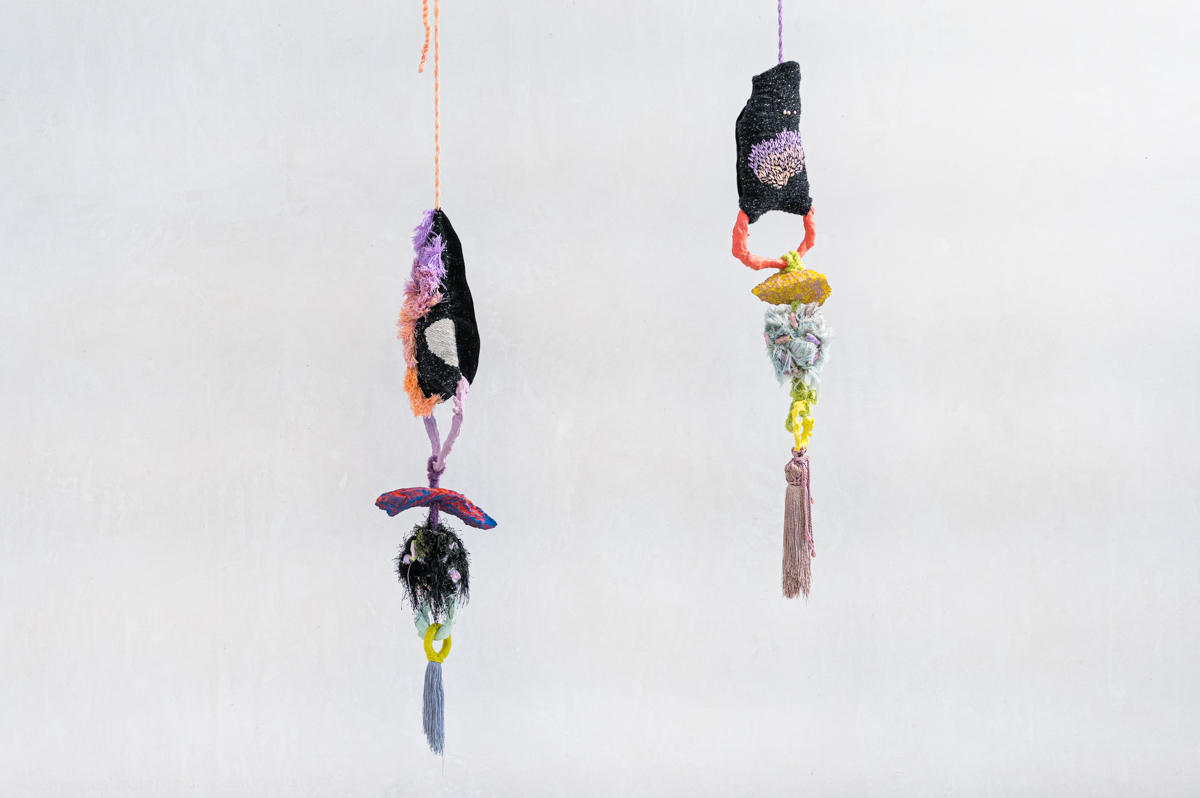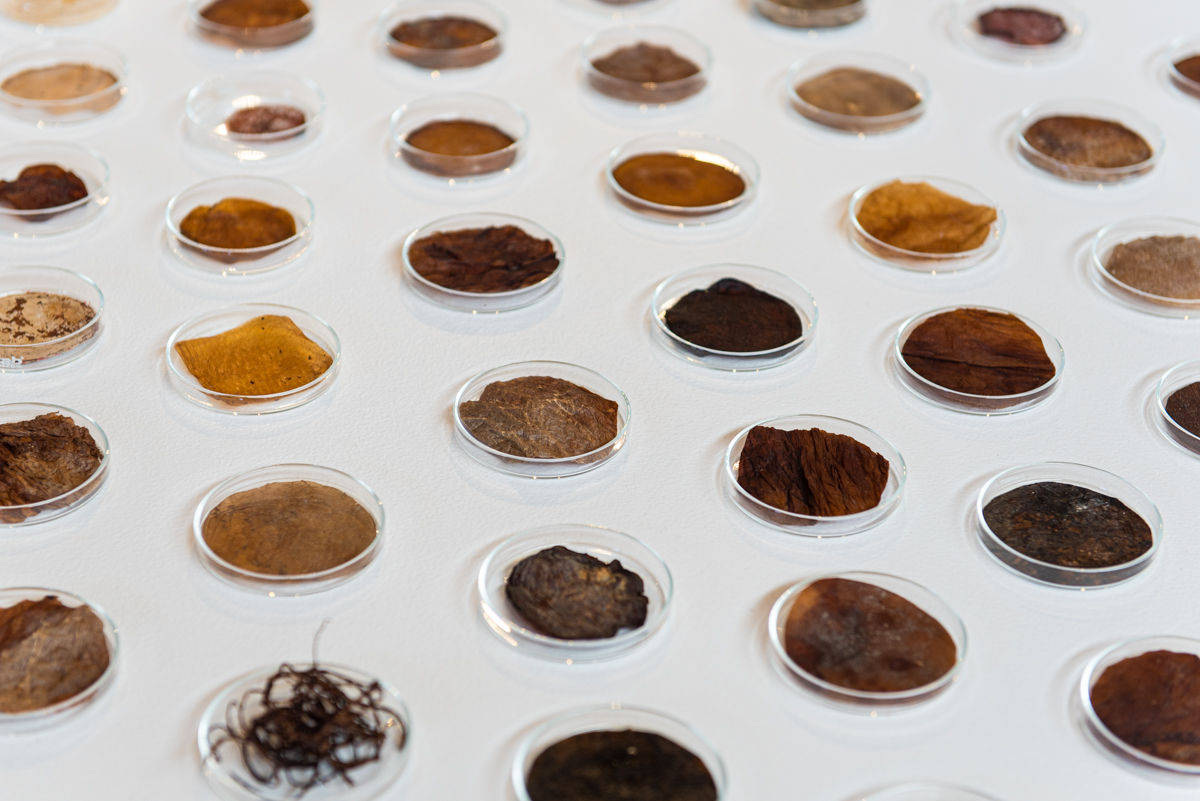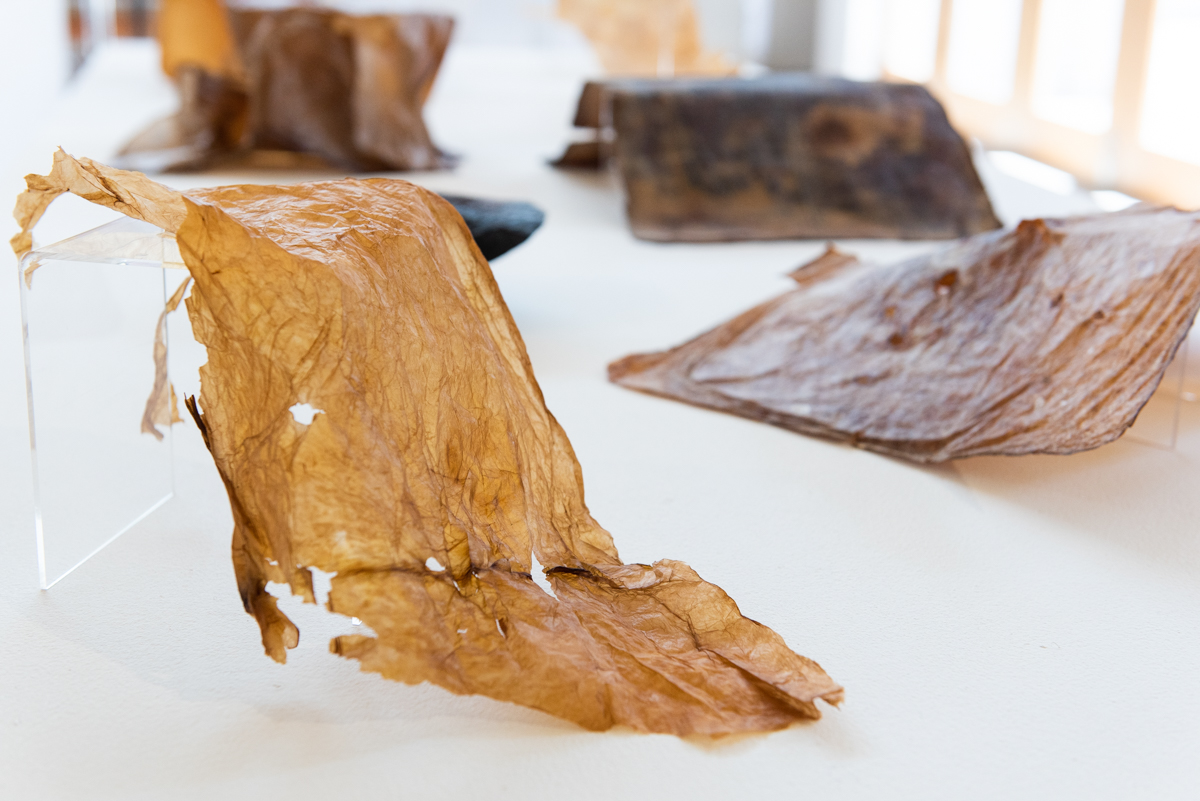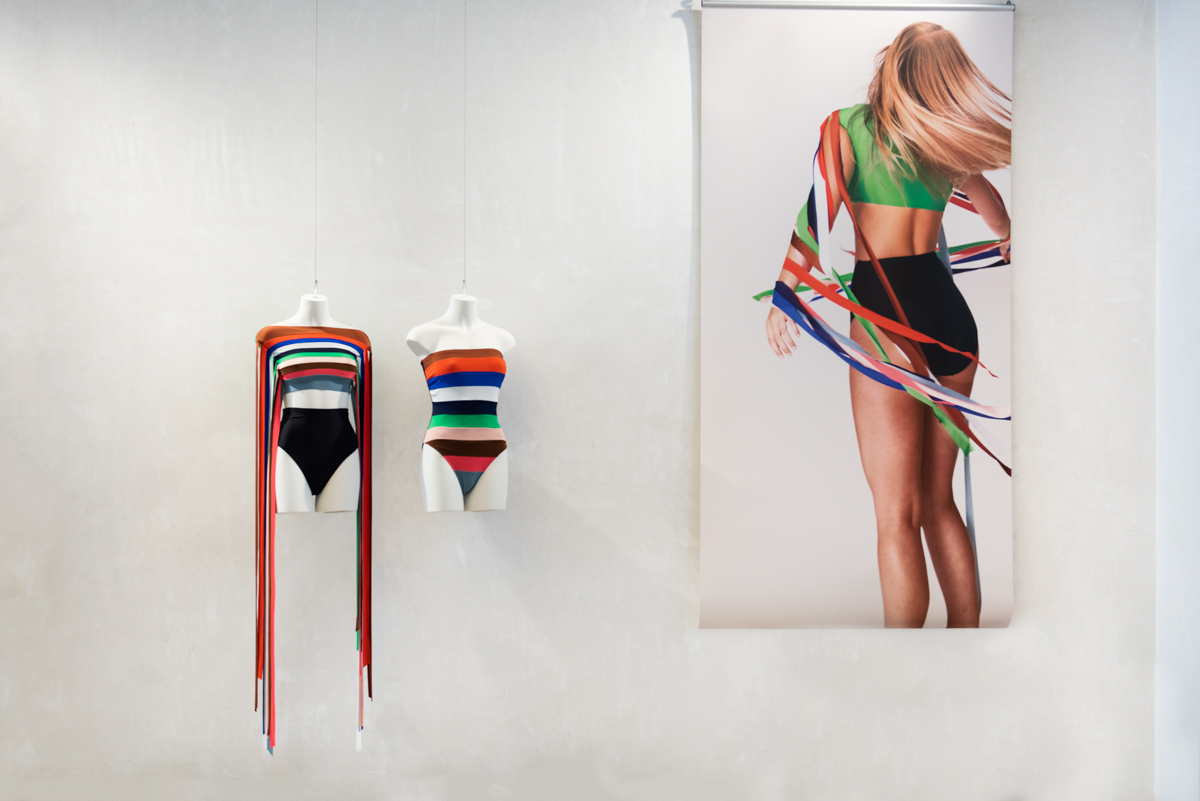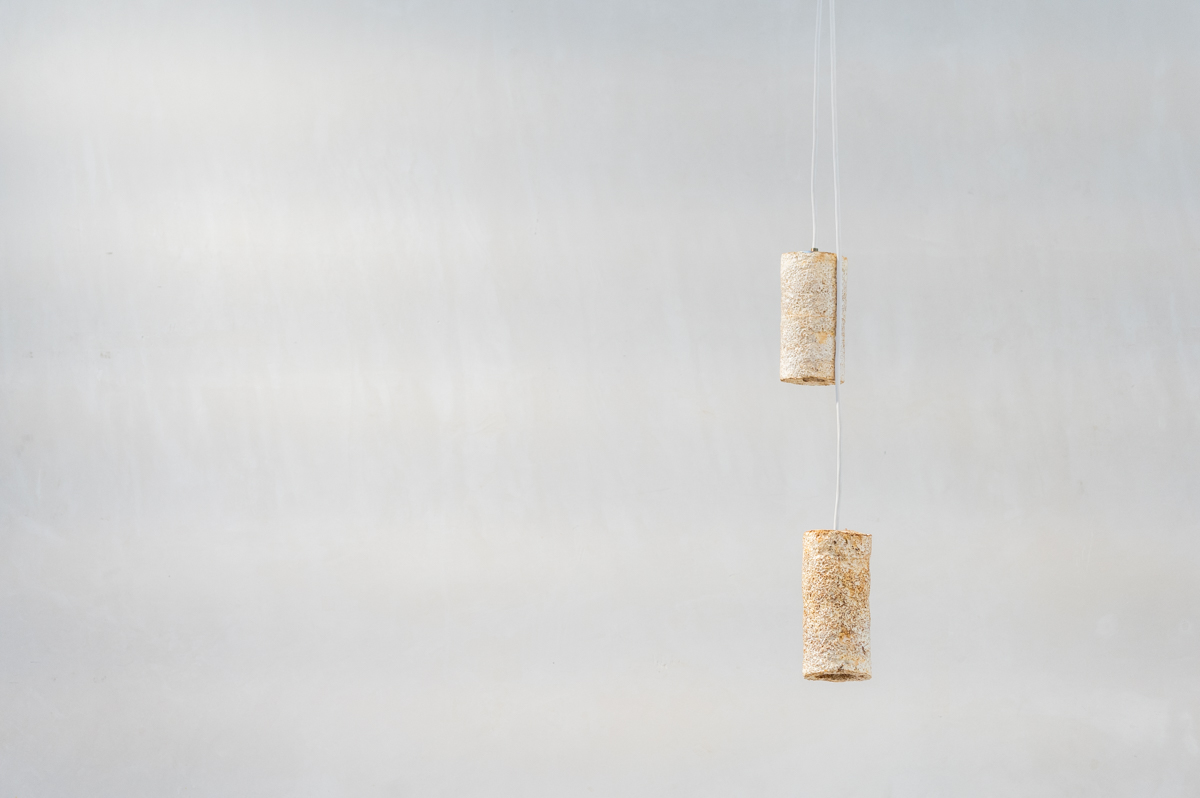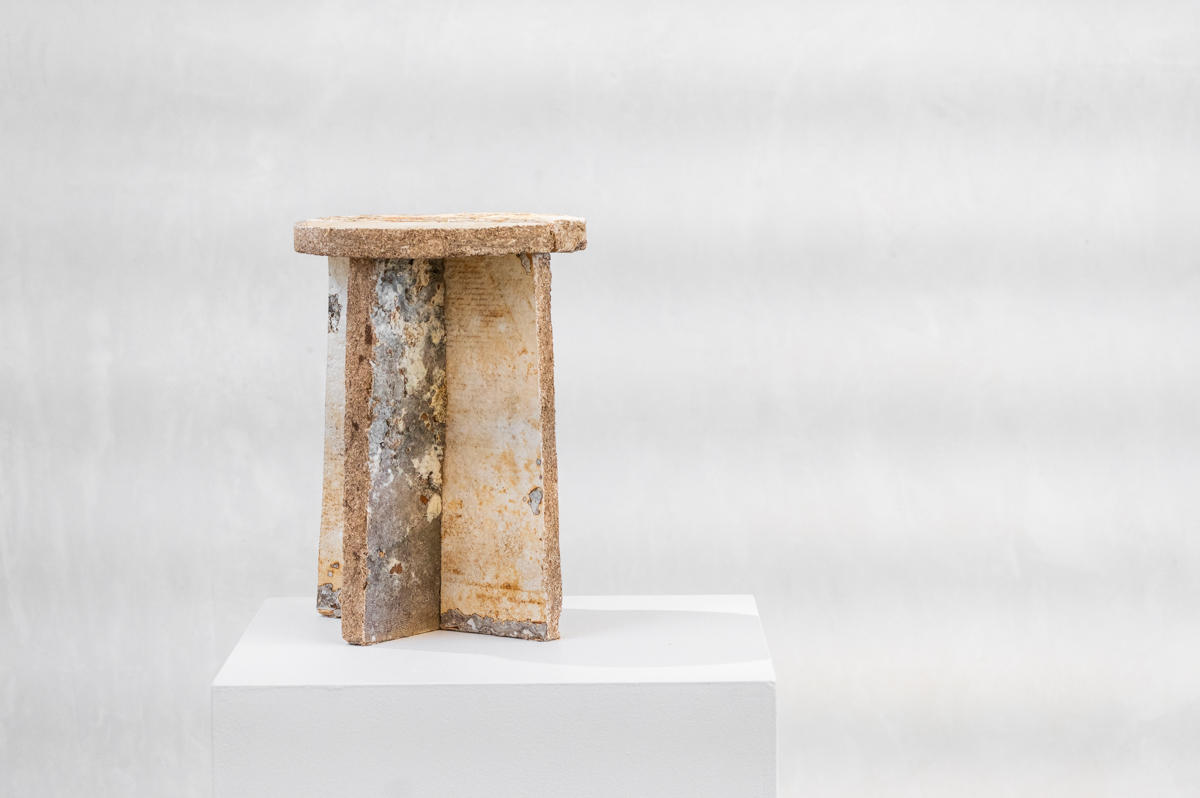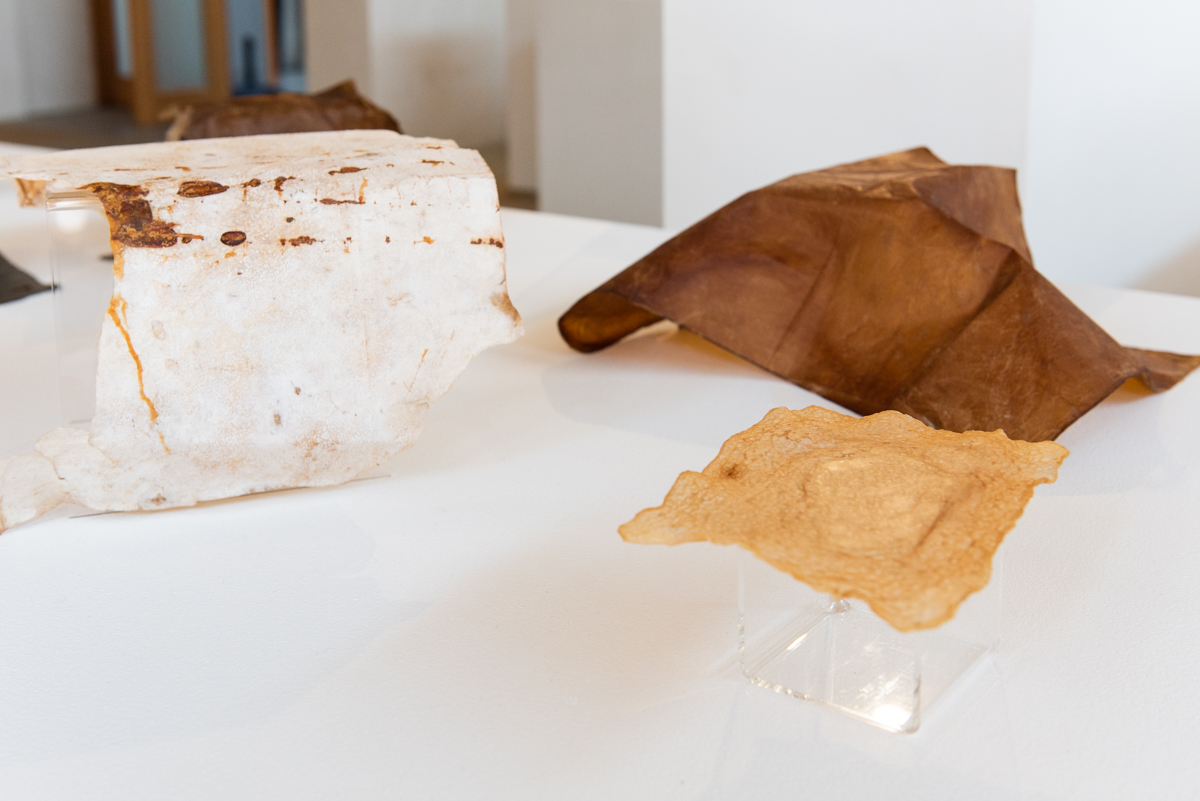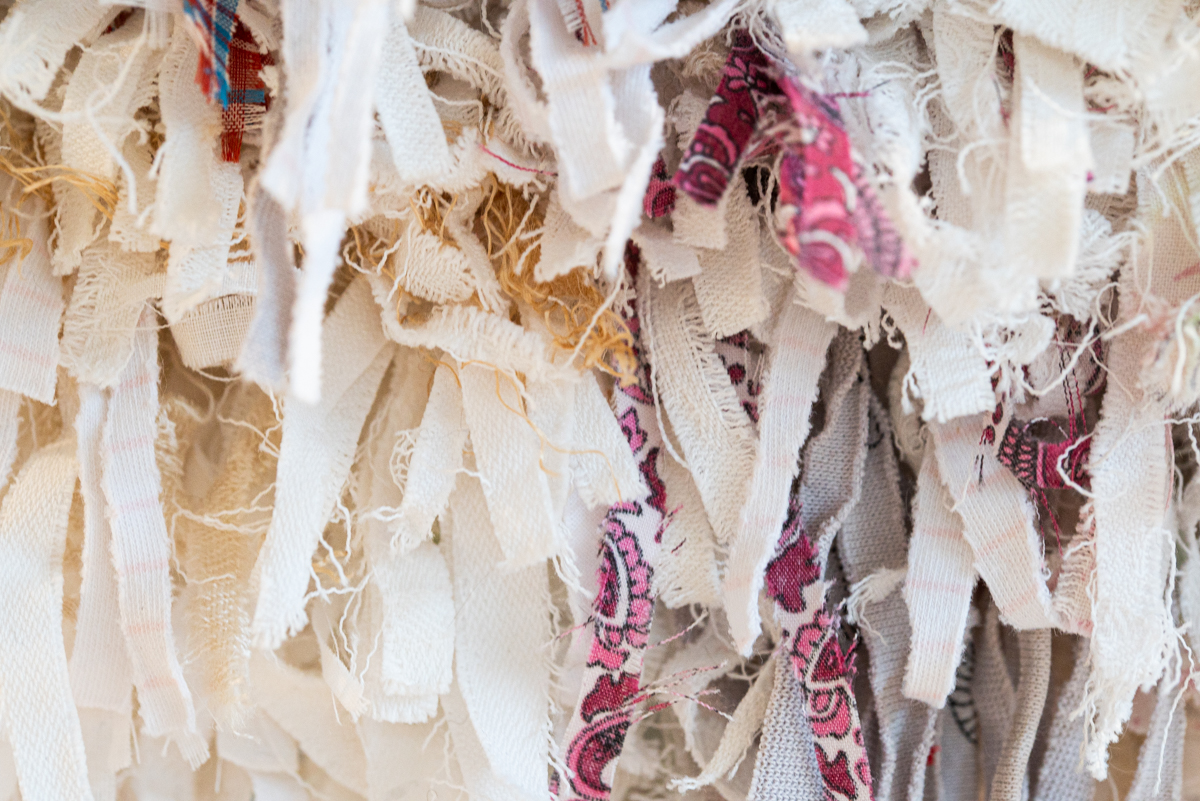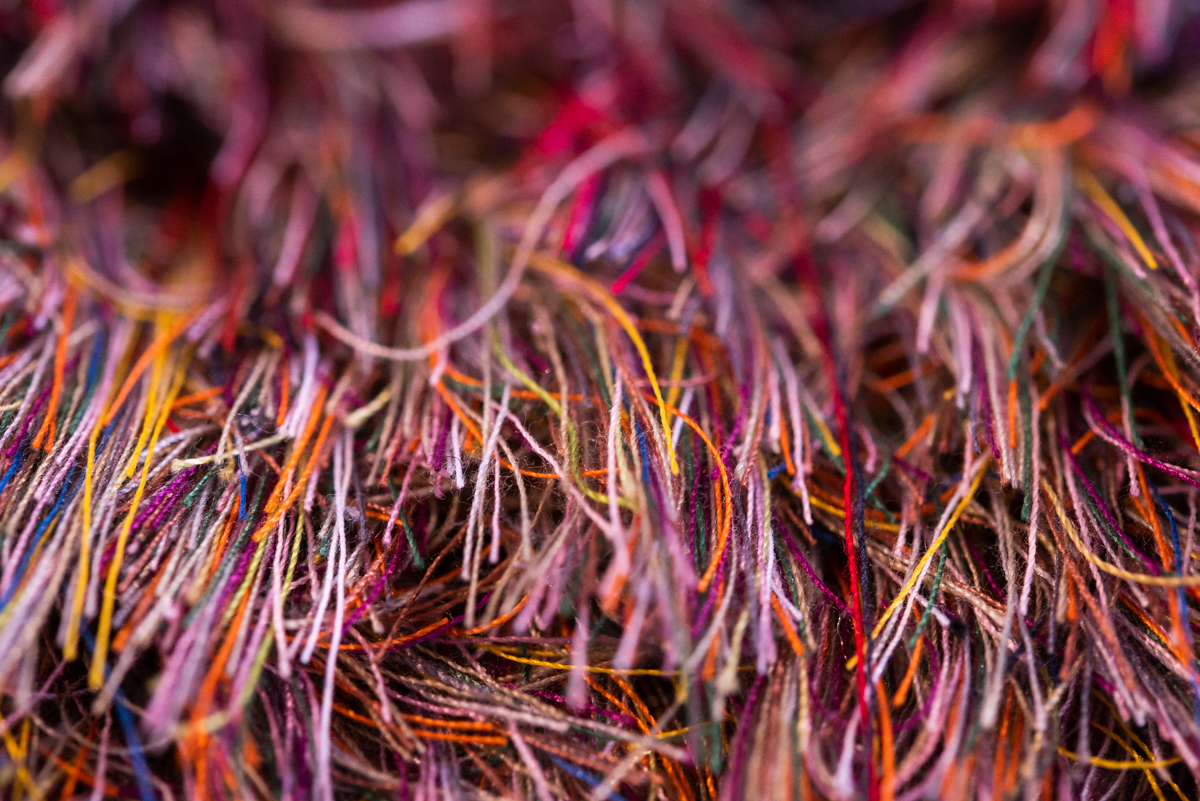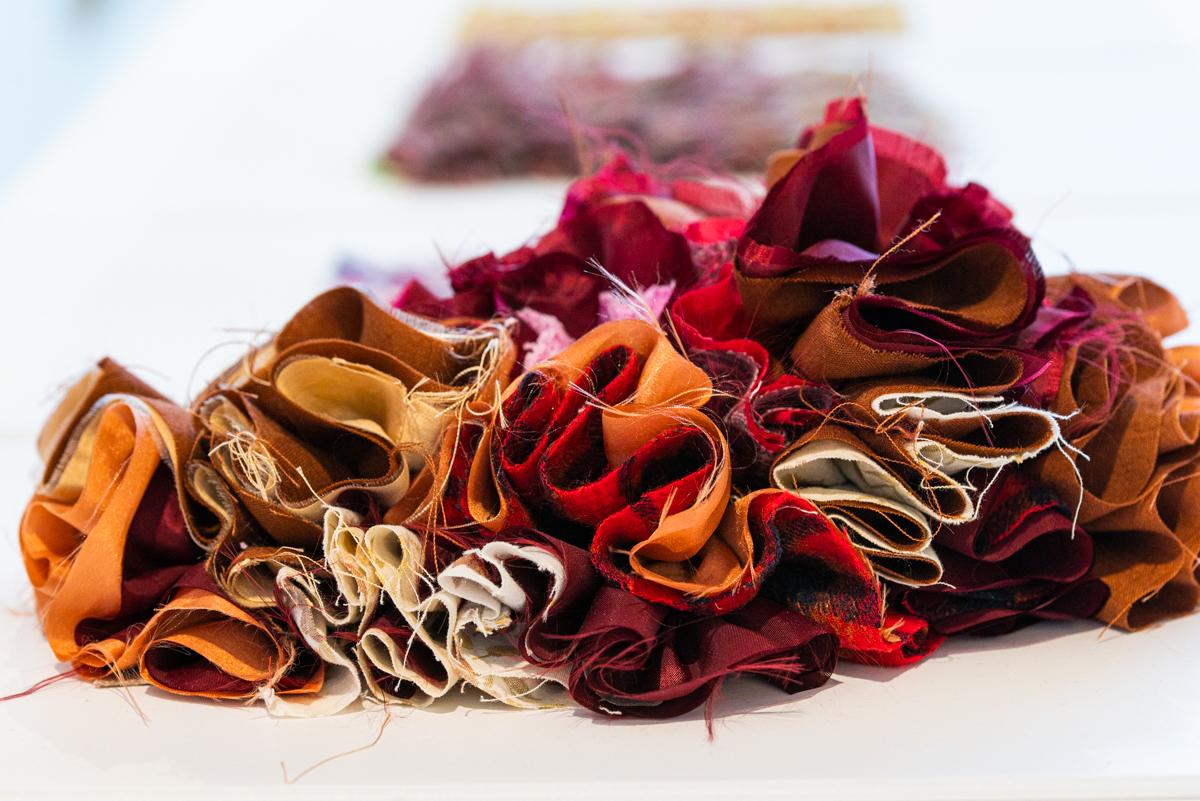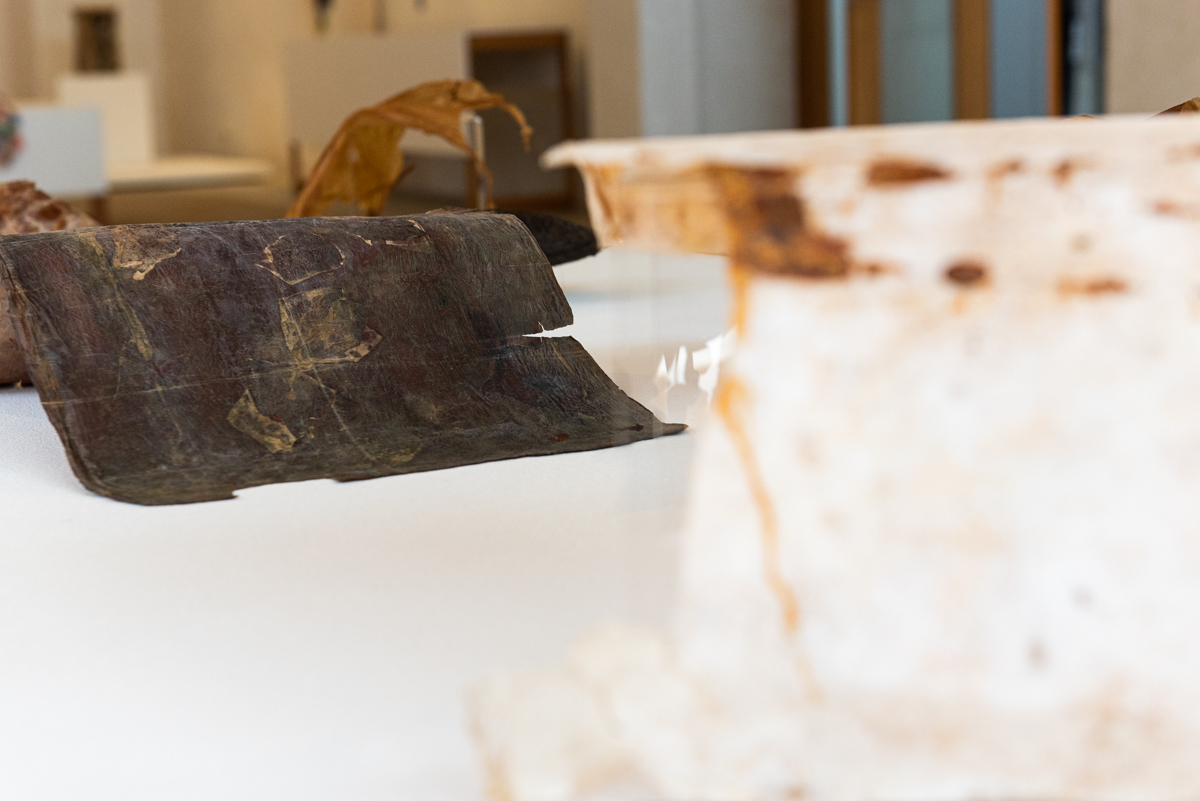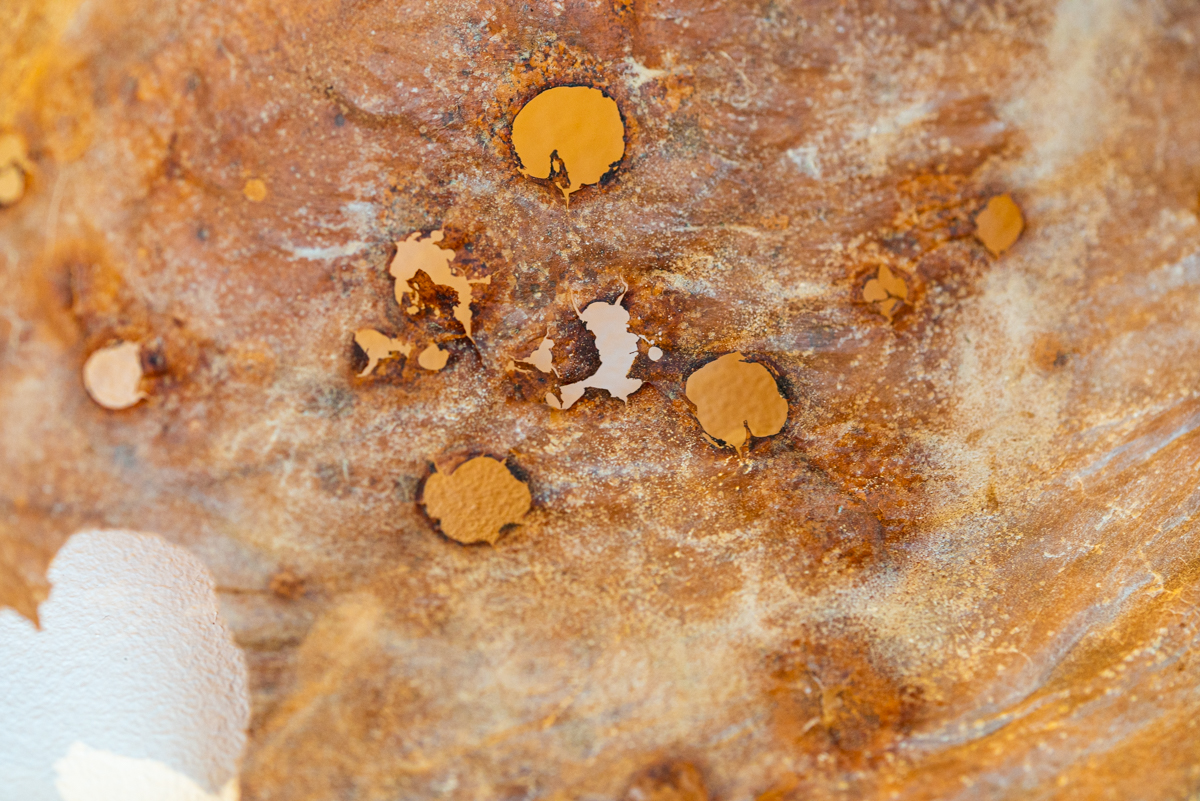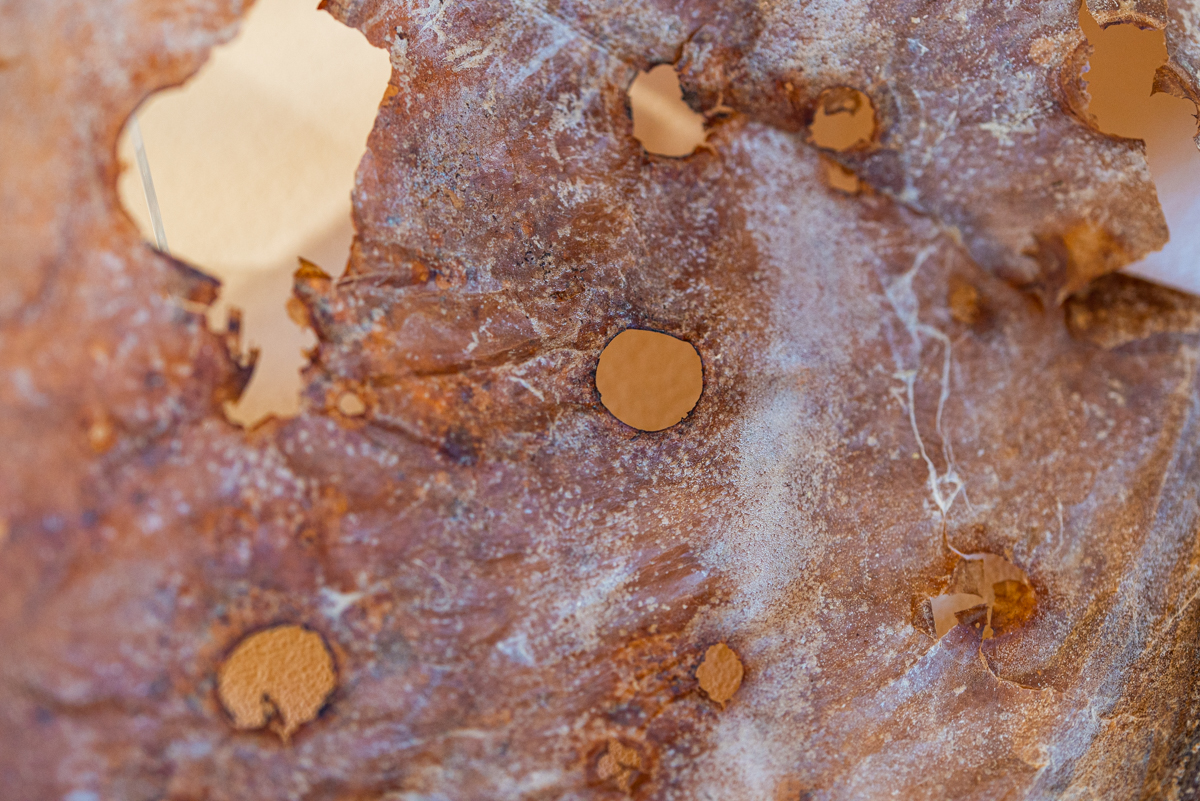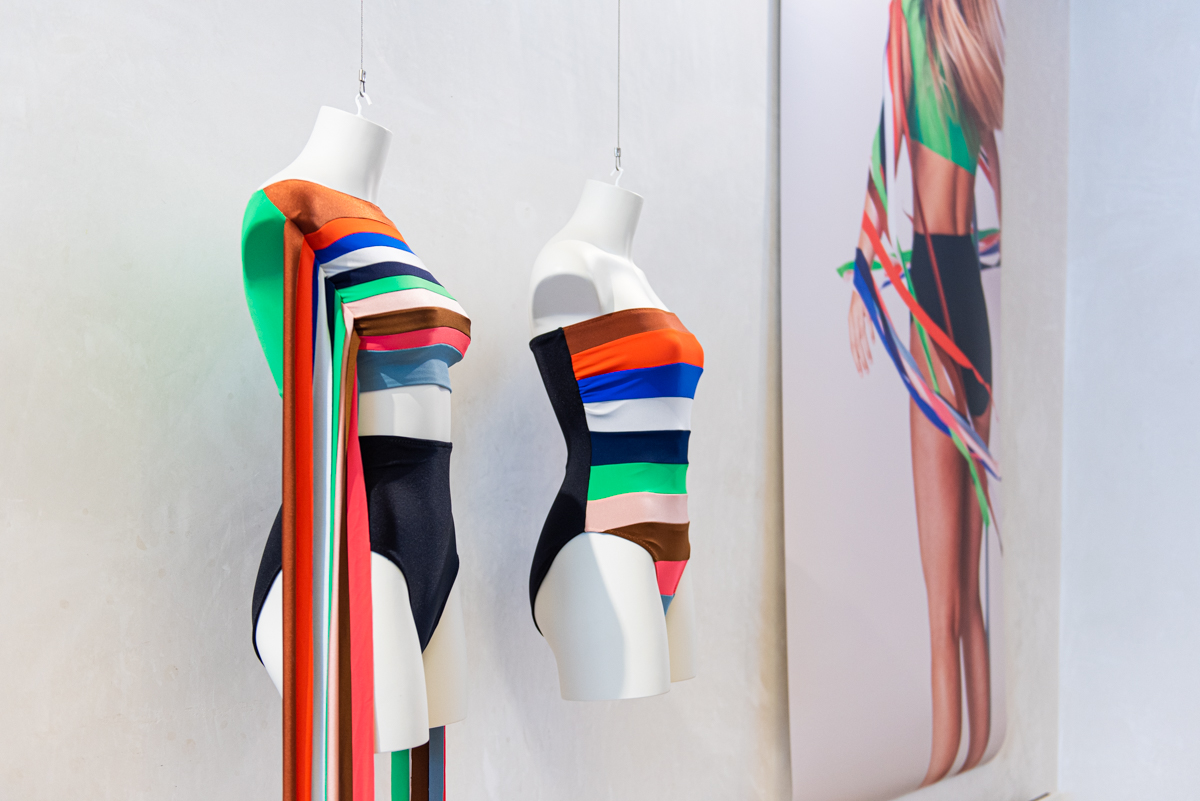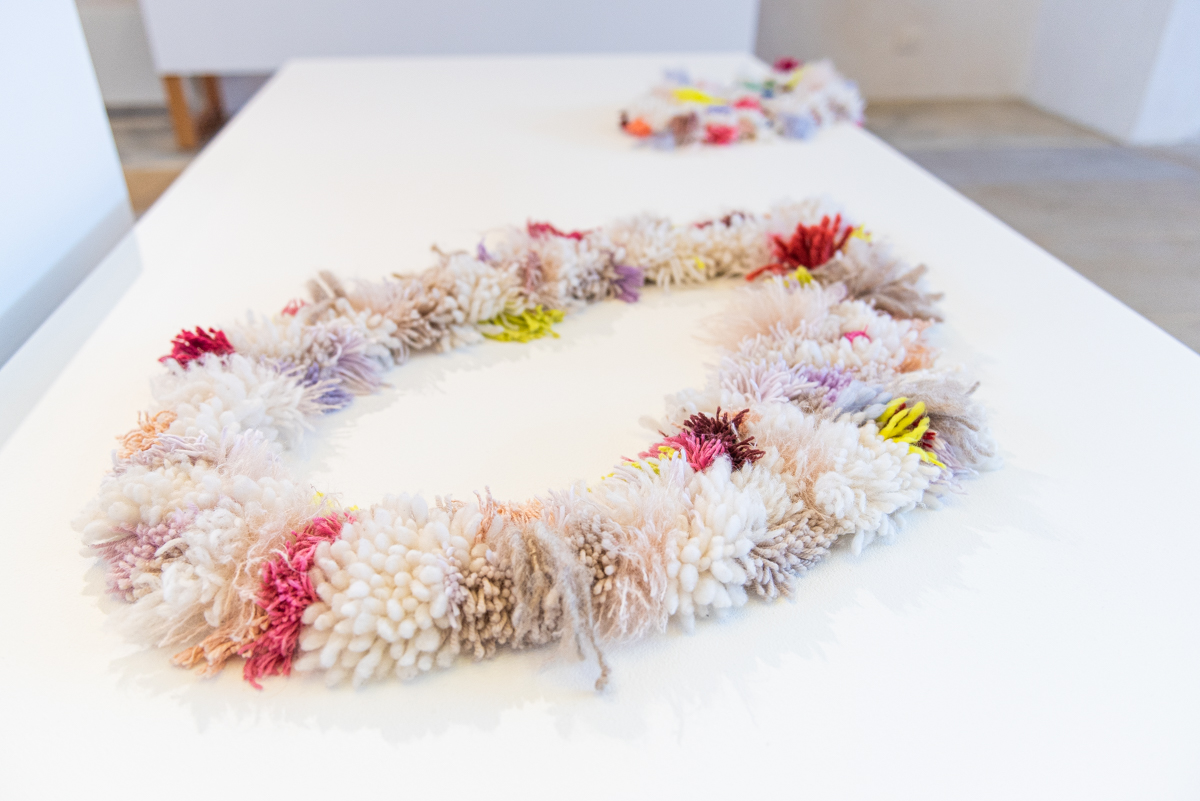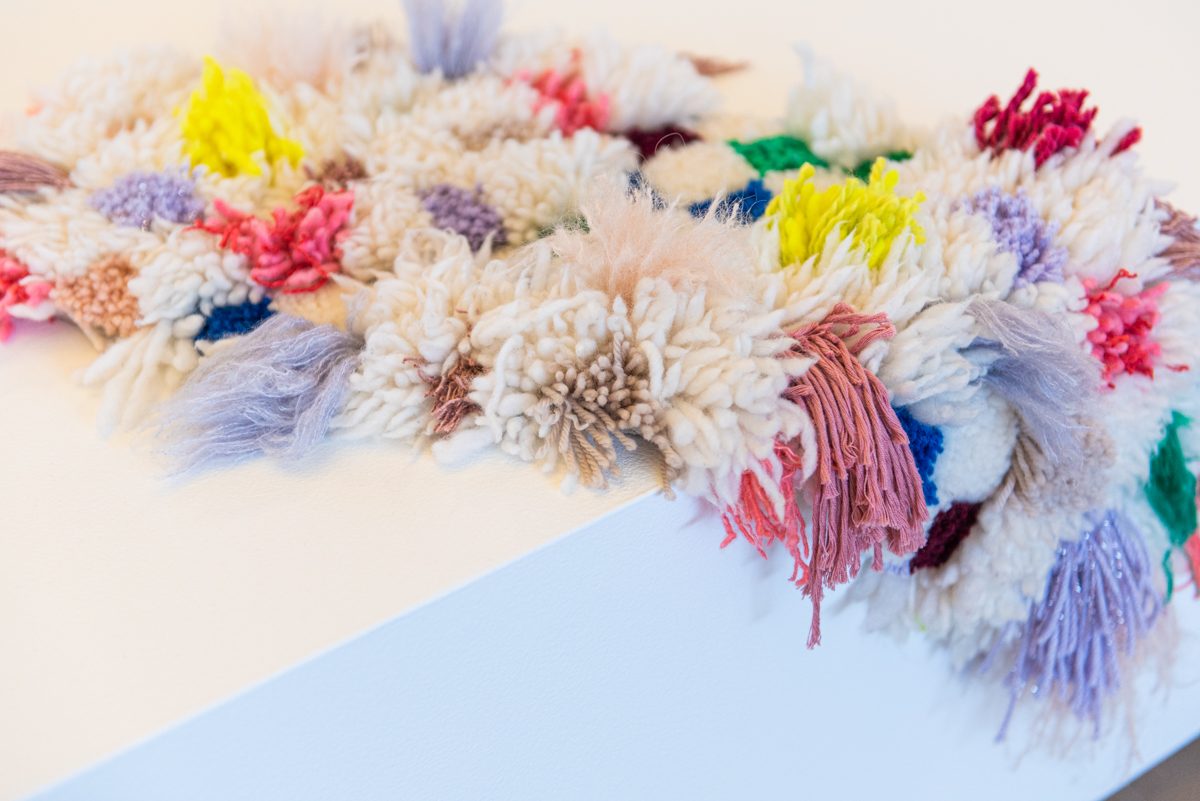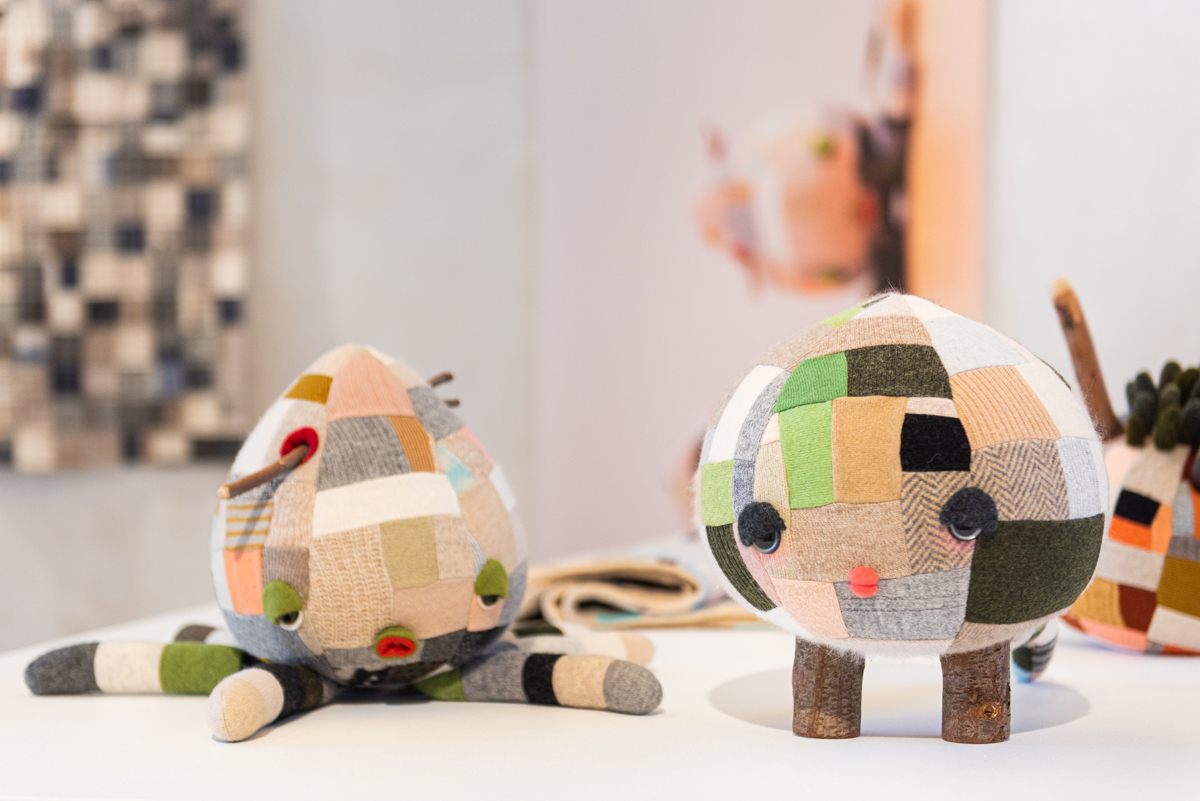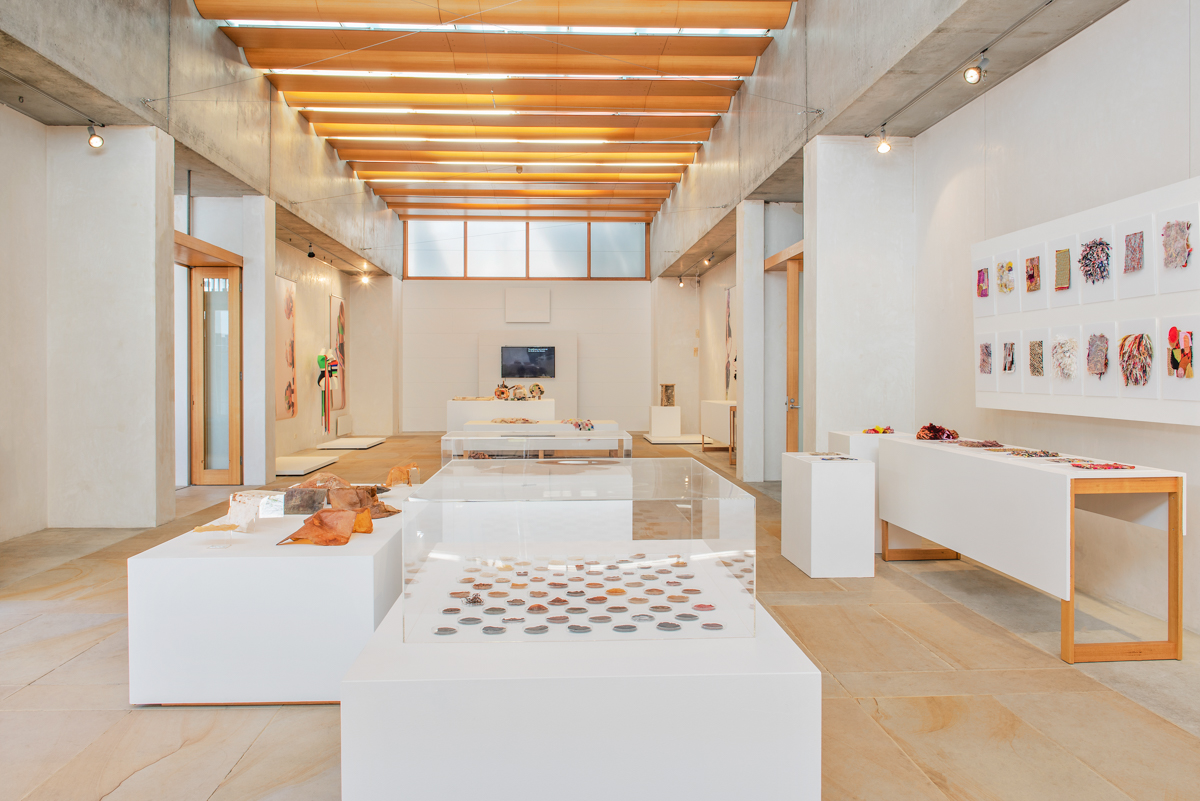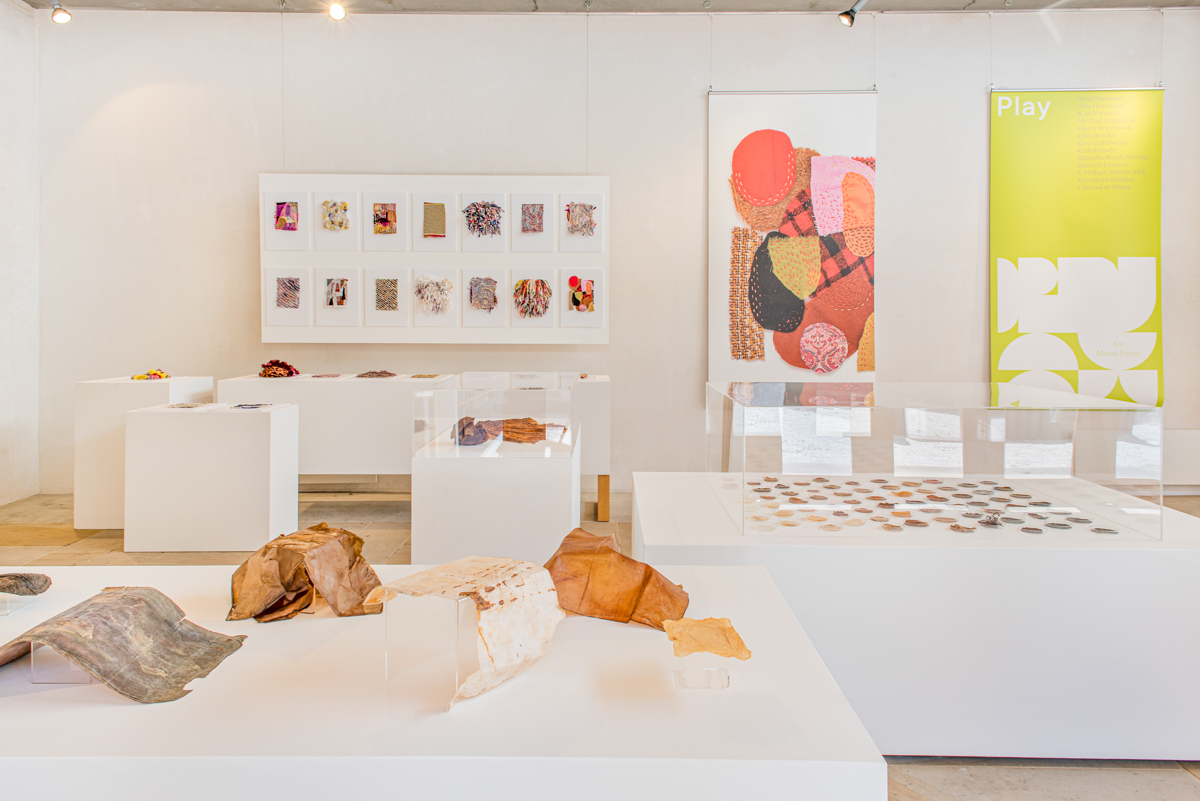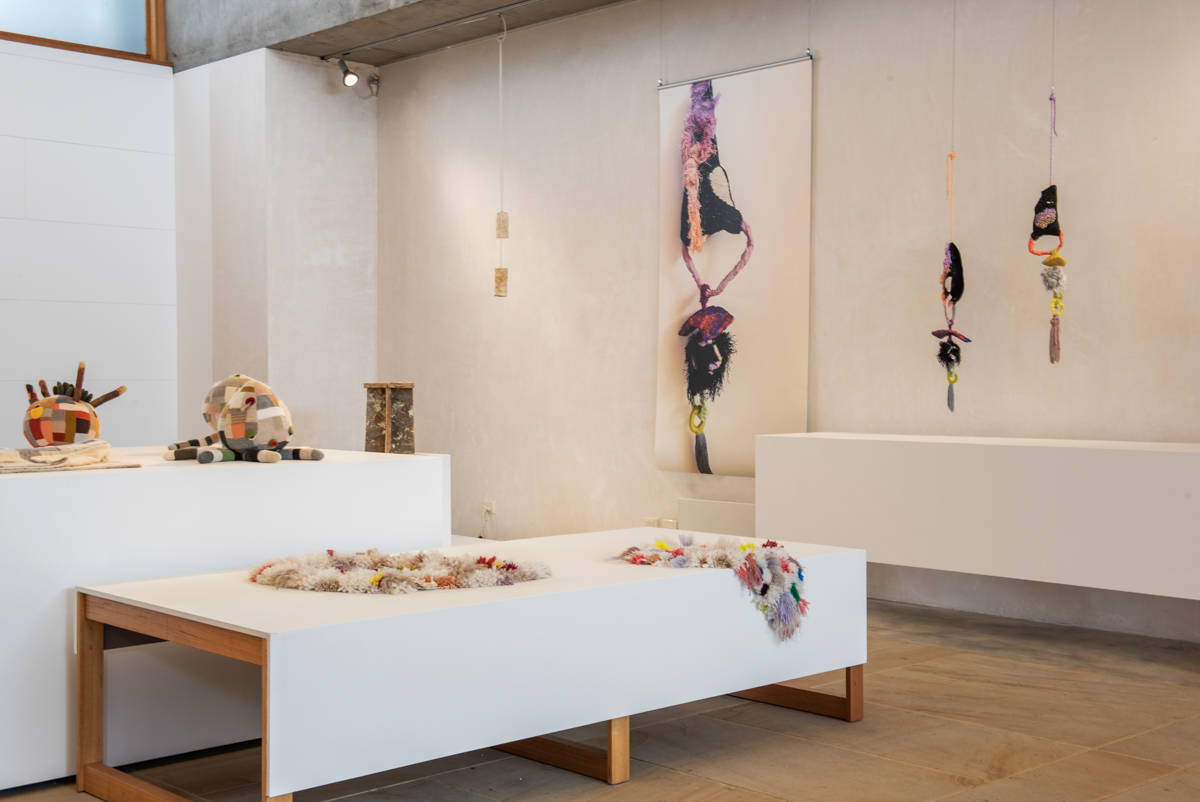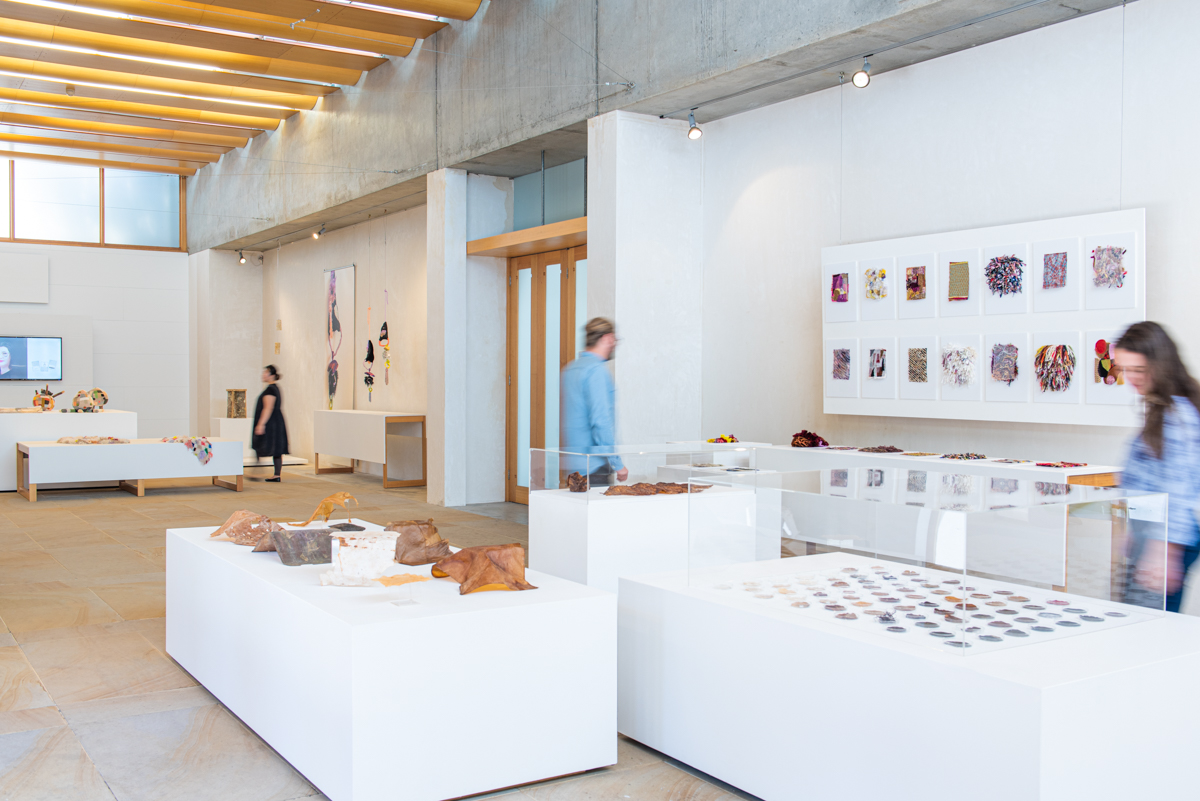Design Tasmania
Corner of Brisbane and Tamar streets
Launceston, 7250
Tasmania
info@designtasmania.com.au
+61 3 6331 5506
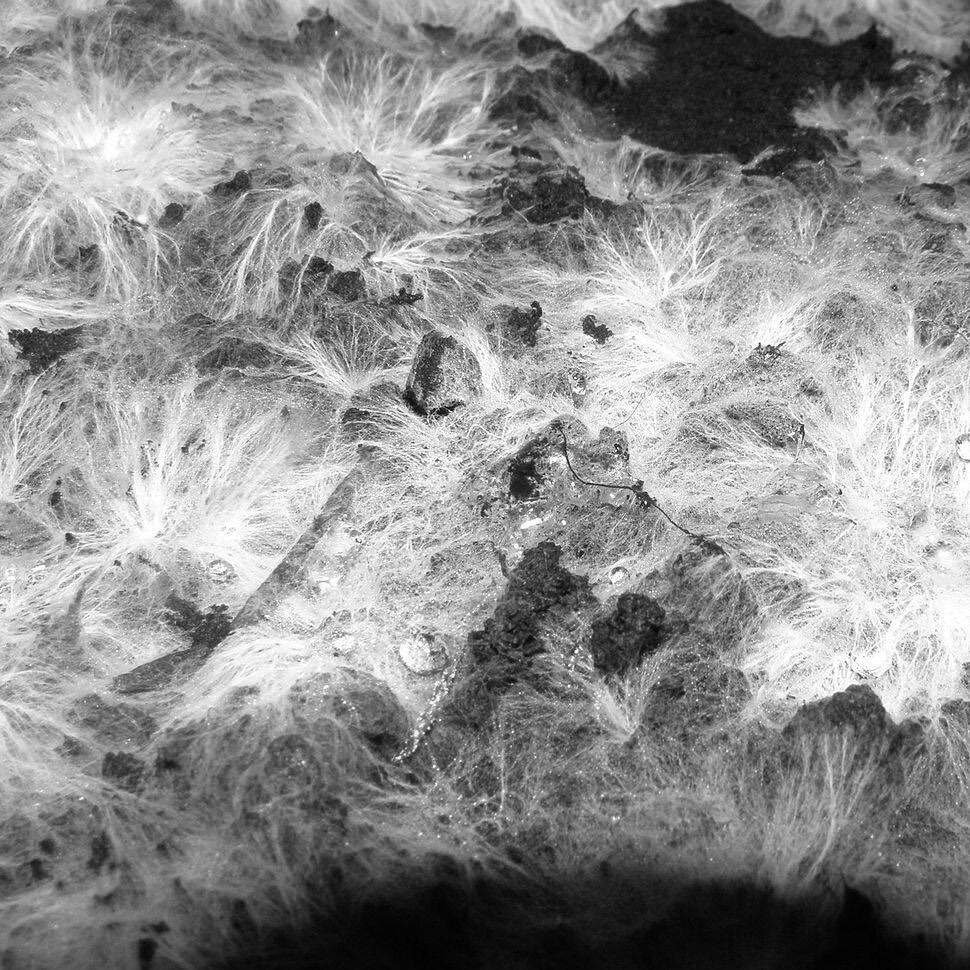
PLAY
15 January - 21 February 2021
Design Tasmania, in partnership with Mona Foma, is proud to present PLAY, an exhibition where up-cycled and recycled textiles are transformed into precious objects and the plastic possibilities of bio materials are explored. In this exhibition, spontaneity clashes with intent to realise a kind of resourcefulness that gets back in touch with the authenticity of making.
Design Tasmania presents leading and emerging Australian designers overcoming stasis through design thinking. We invite audiences to join them in their processes of adaptation through social and collaborative recreation.
Let's PLAY.
Information about the works on display for this exhibition is available in the Design Tasmania PLAY Guide.
Take the 3D Tour
Presented in association with Mona Foma 2021.
Curated by Claire Beale.
Image credit: Courtesy of Mycelium Studios 2021.
The Exhibition
PLAY is an exhbition that allows us to explore the impossible. Play in youth education programs was inaugurated in the early 19th century concept of Kindergarten as an essential part of developing "physical, intellectual and moral powers of all children" (Wilderspin, Samuel 'The Infant System' 1832).
"The opposite of play isn't work: it's boredom"
–Dr. Stuart Brown, National Institute for Play (US)
Playing with materials is a form of synthesising insight– the isolation of COVID has had the unexpected impact of becoming a sandbox for creative ideas: PLAY gives a platform to the articulation of the curiosity and problem solving that has come out of this historic shift in our collective consciousness.
The Designers
Featured Designers
Alexi Freeman | Dale Hardiman & ACV Studio | Aly Peel (maiike x) | Eileen Braybrook | John Brooks | Elise Cakebread (Cakebread) | Michelle Boyde (BOYDE) | Ed Linacre, Philippa Abbott & Mycelium Studios x Brendon Morse
Image Credit: Courtesy of Elise Cakebread, 2021.
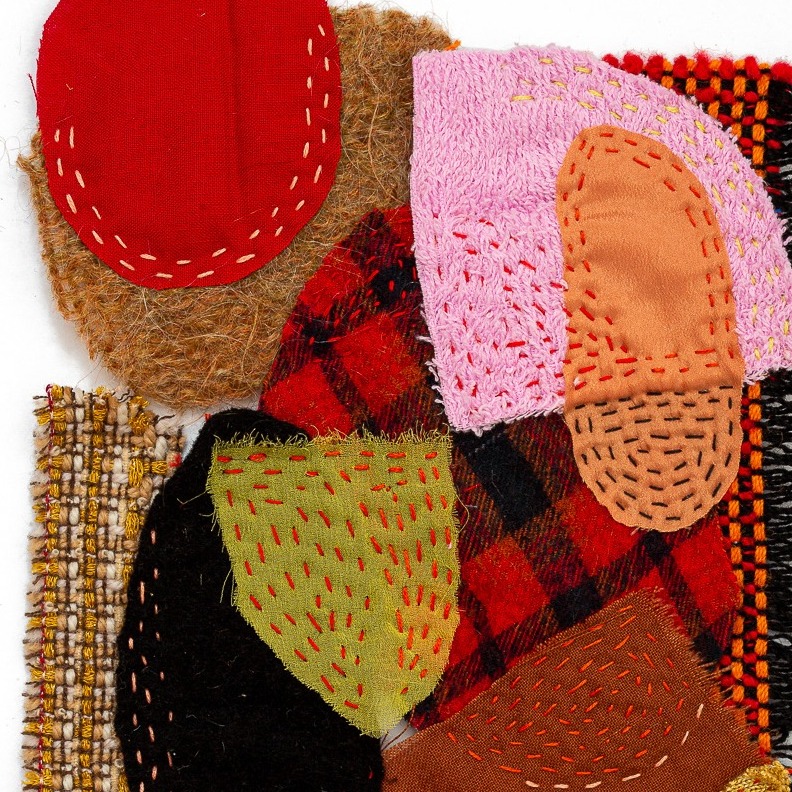
Alexi Freeman
Alexi Freeman, born in Hobart 1978, lives and works in Naarm (Melbourne) and attended the University of Tasmania (UTAS) majoring in printmaking and sculpture by day, whilst spitting anti-colonial spoken word as part of the post-punk scene in Hobart by night, culminating in a mid-set performance during Little Ugly Girls (LUGS) supporting Bikini Kill in 1996: “the weirdest performance ever seen” (Kathleen Hanna).
Freeman then continued to hone his aesthetic in New York, paying the bills in his birthday suit striking poses for an artist who claimed to have given Robert De Niro a happy ending.
Throughout his multi-tonal career, Freeman continued to develop his interdisciplinary, intersectional practice interweaving art, fashion, jewellery and costume, before returning to Australia to relaunch his fashion label AF, which continues to meander wildly.
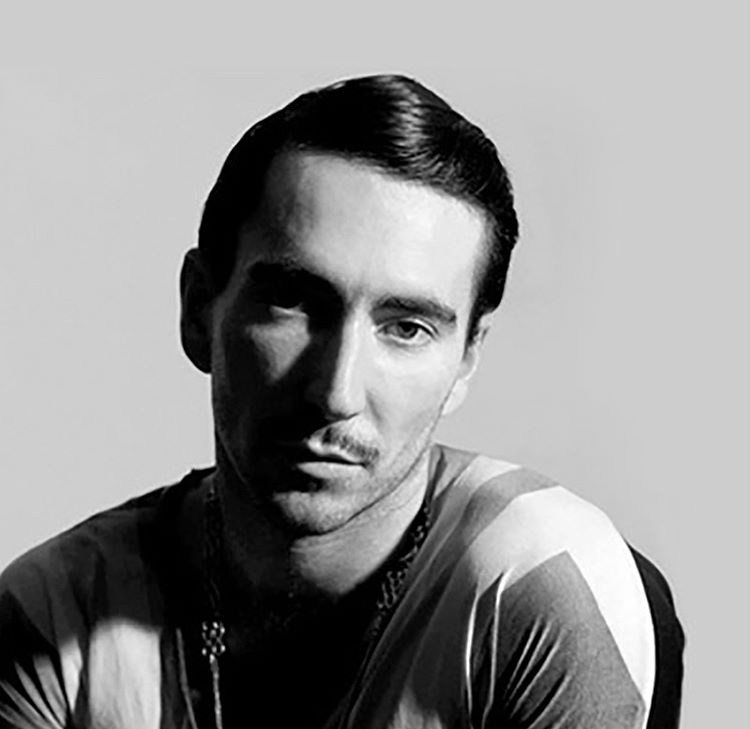
Image credit: Nadia Sliwka
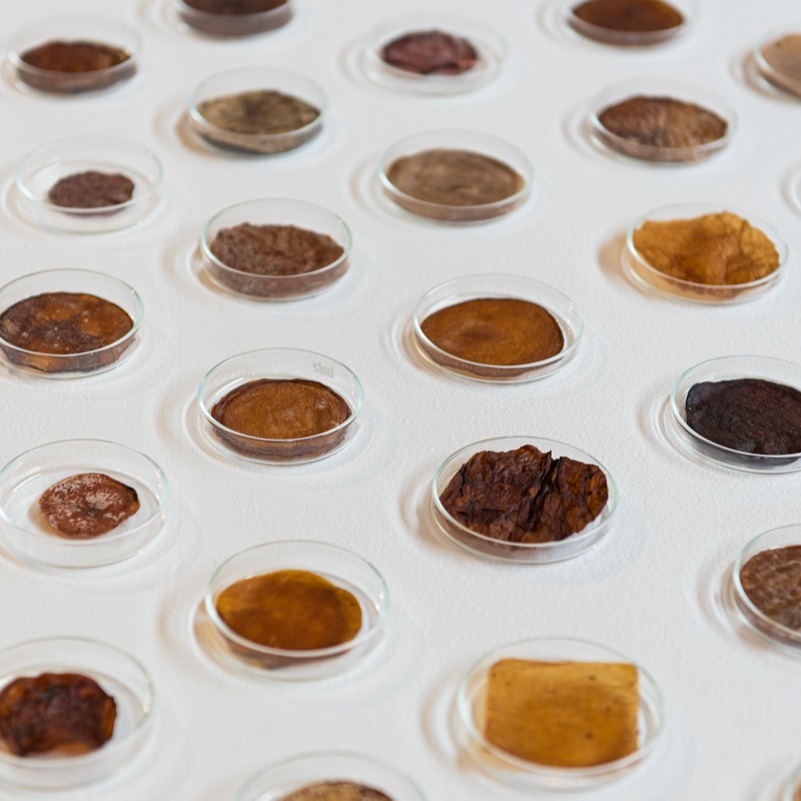
Image credit: Emily Dimozantos
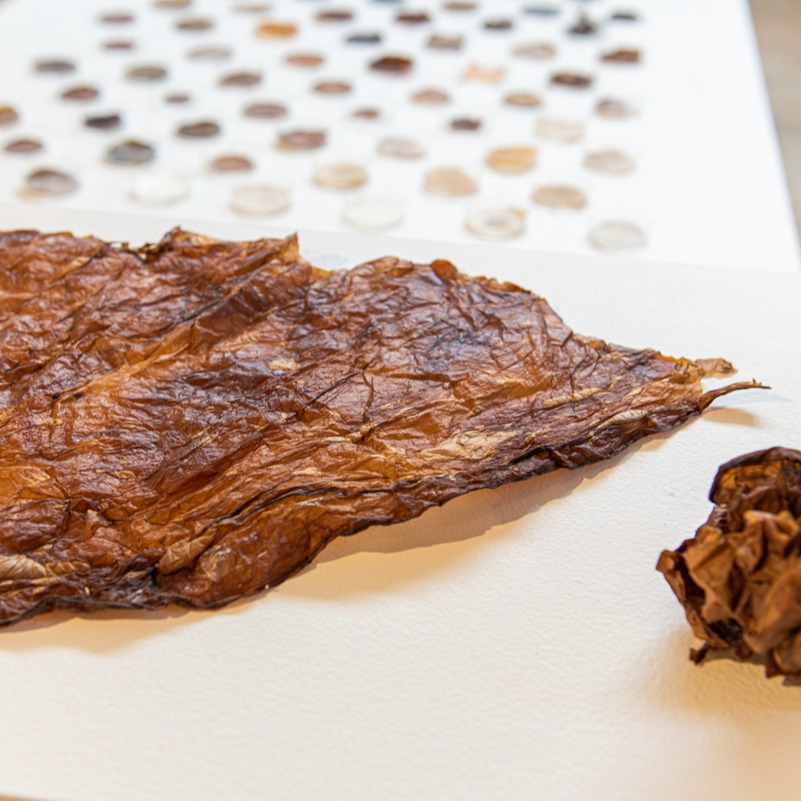
Image credit: Emily Dimozantos
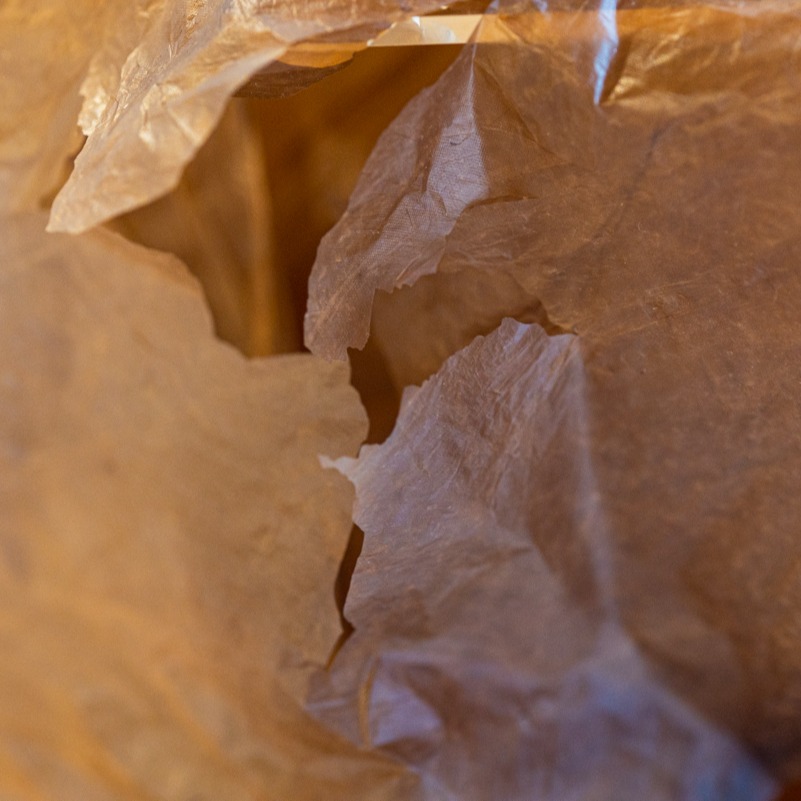
Image credit: Emily Dimozantos
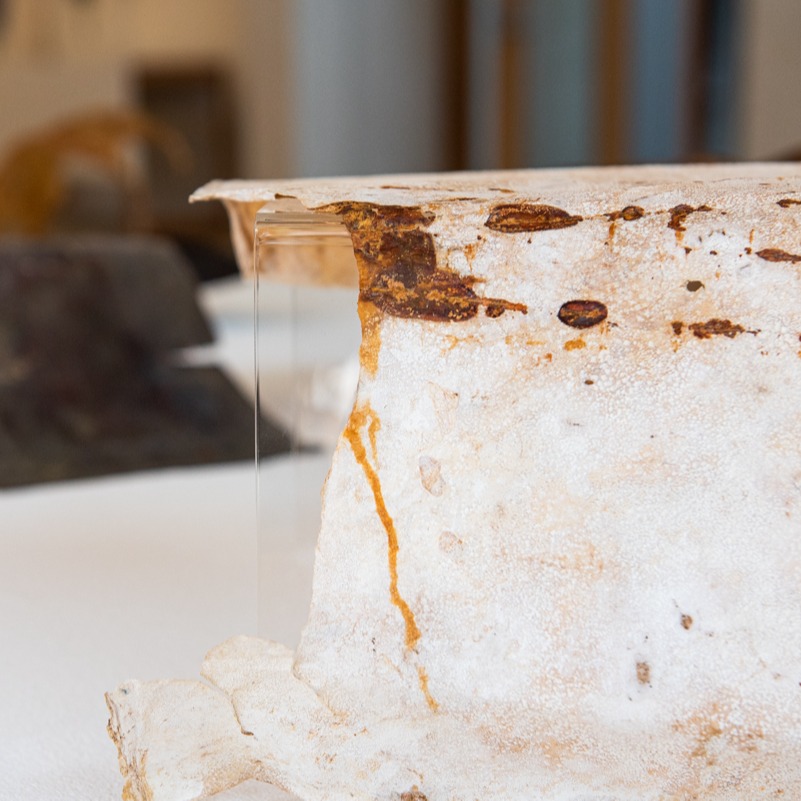
Image credit: Emily Dimozantos
Dale Hardiman & ACV Studio
Friends are a collection of pins designed and made by ACV Studio from conversations and materials shared with Dale Hardiman from other creative friends from Tasmania and greater Australia.
The Friends pins are a reminder that although during COVID we have been physically separated, we are a supportive community of creative practitioners. The pins can be worn day-to-day, or during video calls as a symbol of sharing and community during isolation.
Hardiman is a multidisciplinary designer working across furniture, lighting and accessory design as well as event and exhibition design, curation, art direction and branding.
ACV Studio is a project by metalsmith and artist Anna Varendorff, hand-making limited edition objects through experimental practice as a designer-maker.
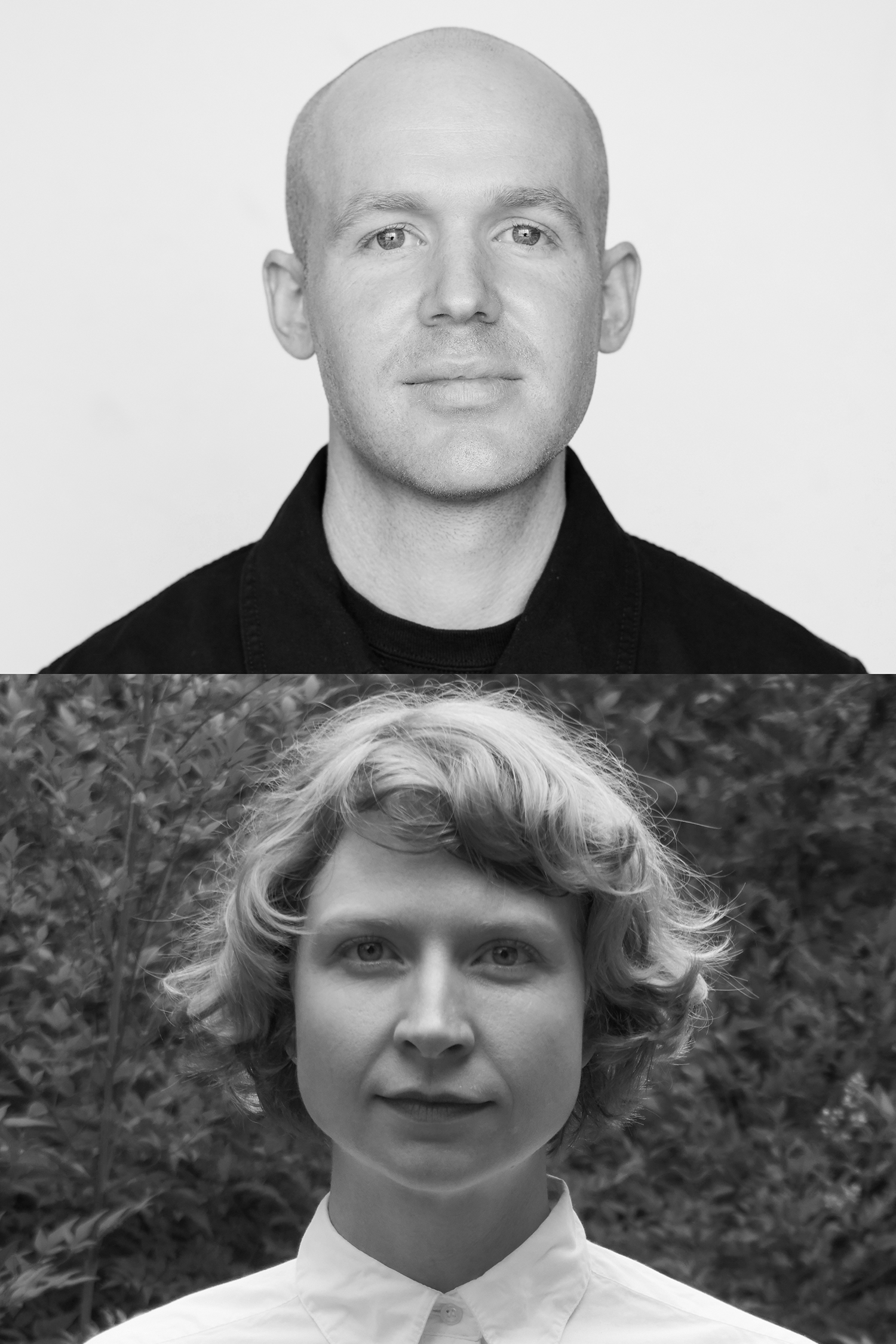
Image credit: courtesy of the artist
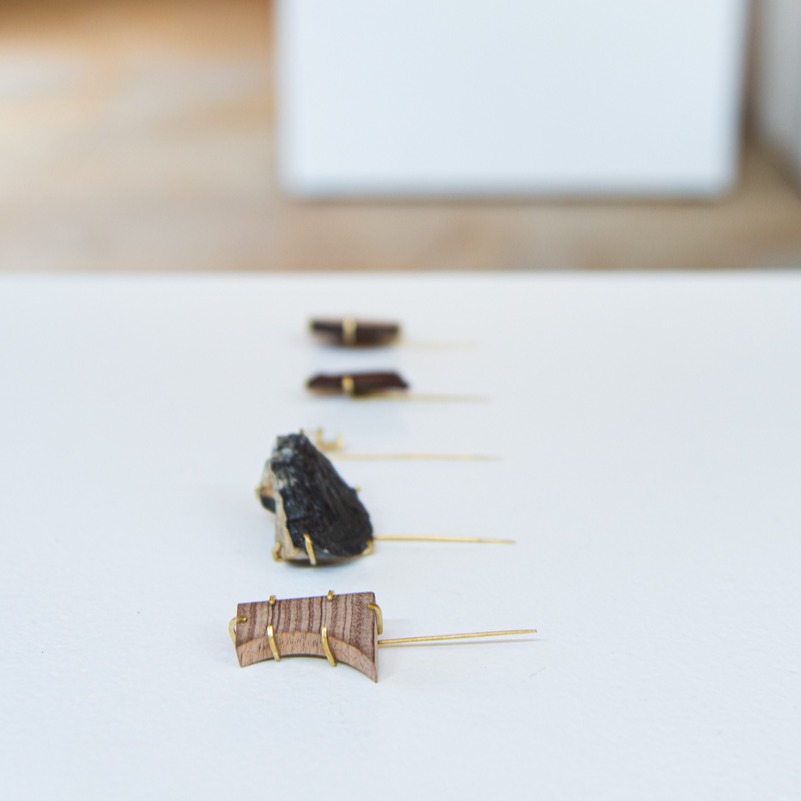
Image credit: Emily Dimozantos
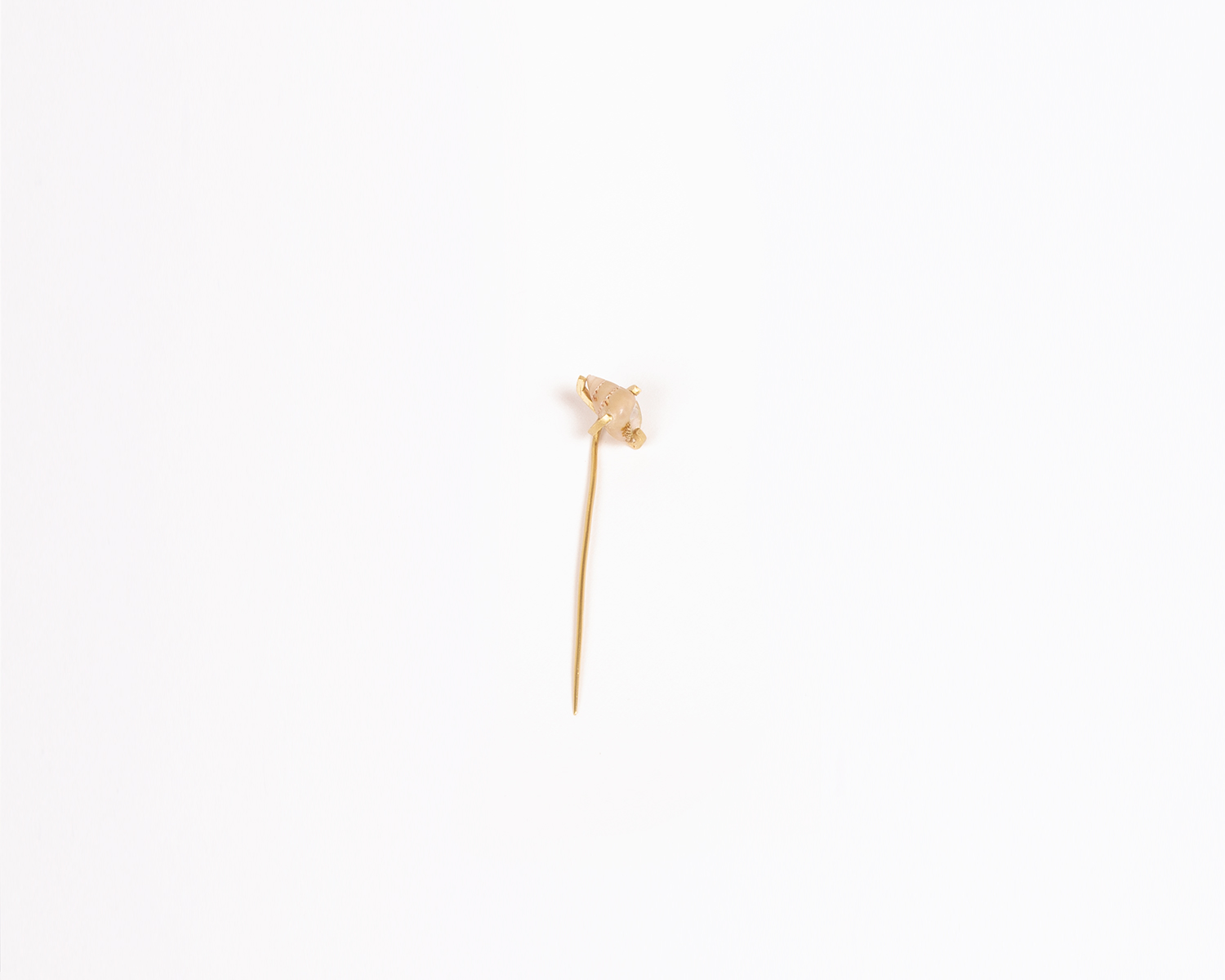
Claire Beale, Pin #1, 2021. Brass, Maireener Shell. Image credit: courtesy of the designers

Glass Manifesto, Pin #2, 2021. Brass, Glass. Image credit: courtesy of the designers.

Laura McCusker, Pin #3, 2021. Brass, Elm. Image credit: courtesy of the designers
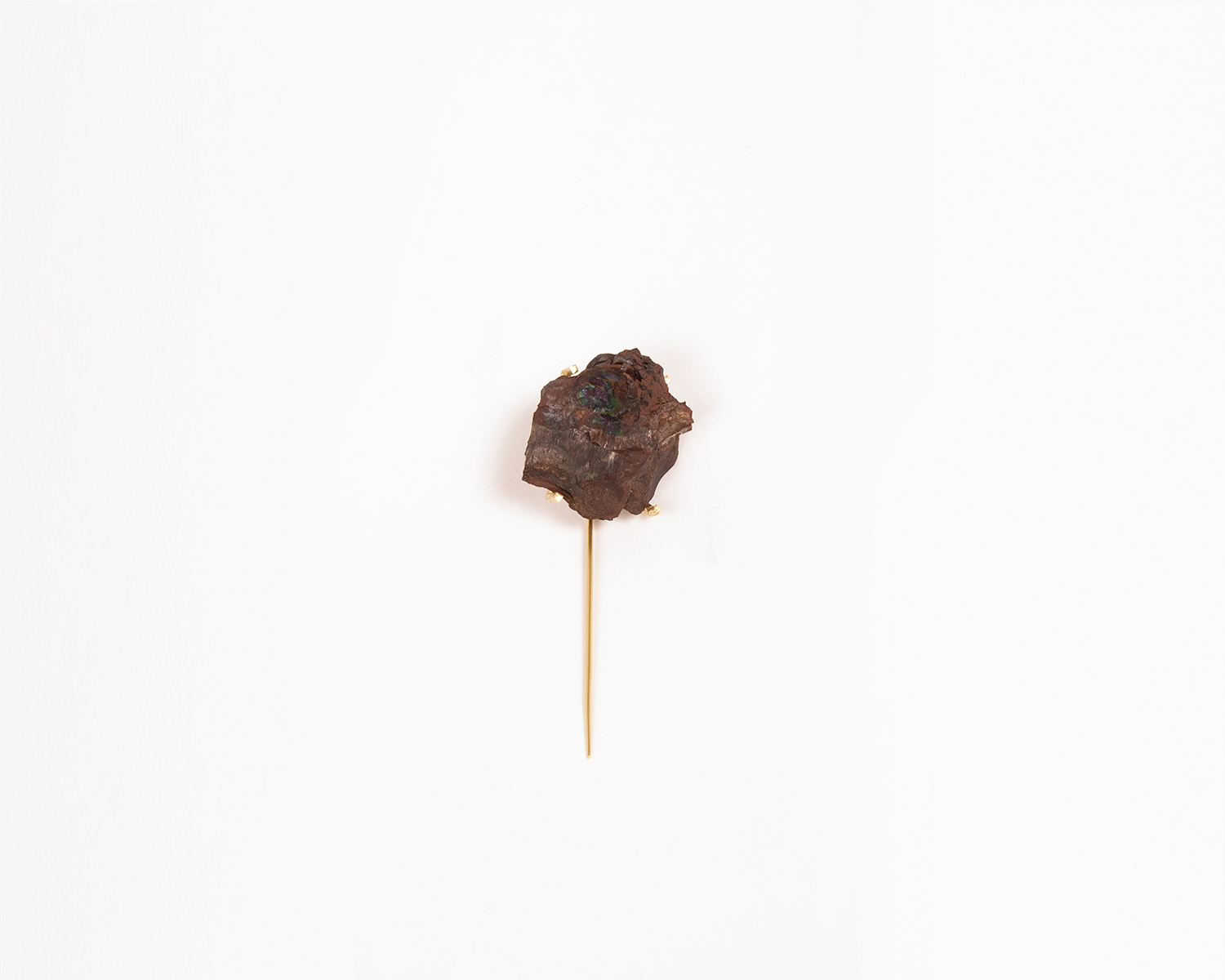
Ben Richardson, Pin #4, 2021. Brass, Rock. Image credit: courtesy of the designers

Ben Richardson, Pin #5, 2021. Brass, Rock. Image credit: courtesy of the designers
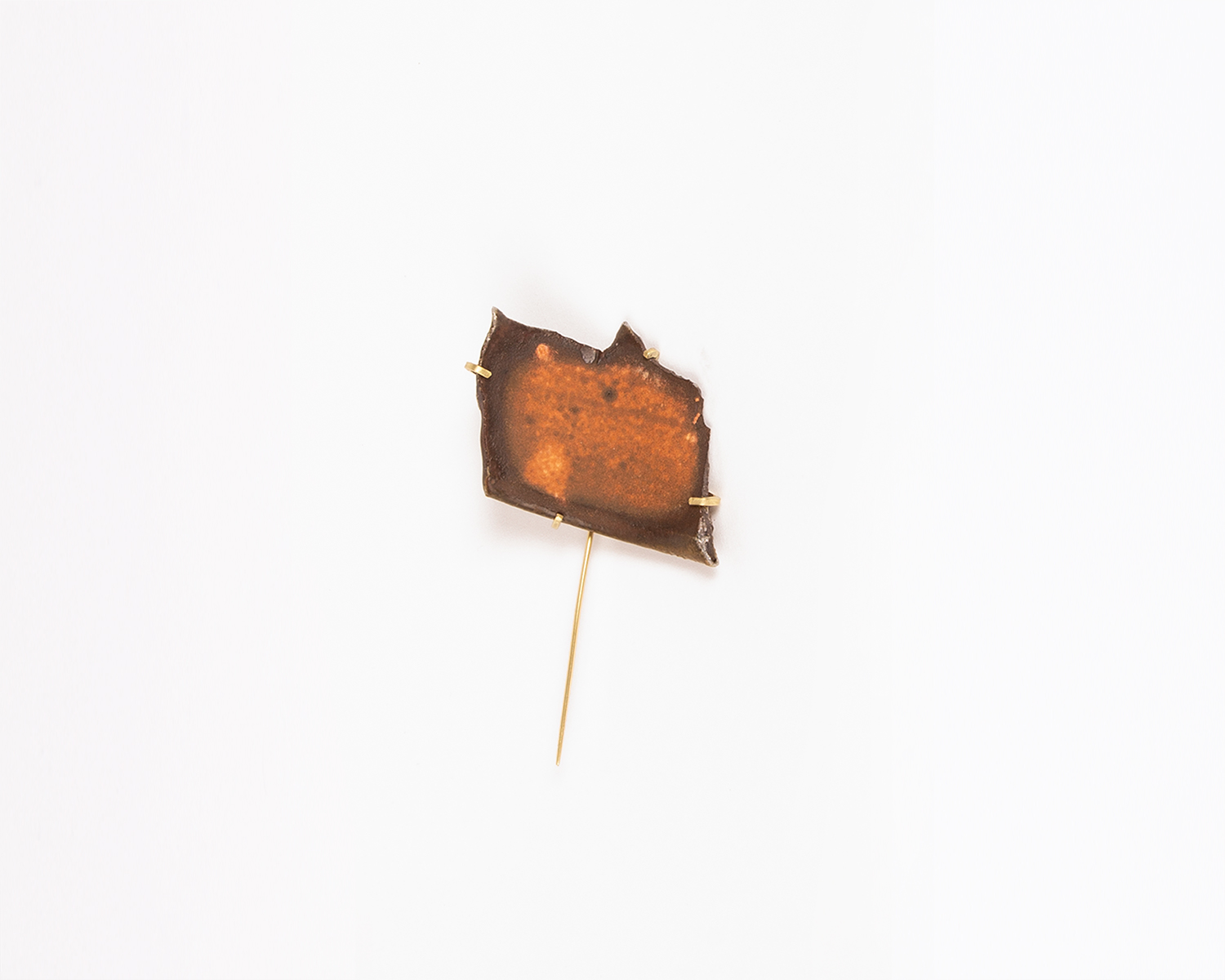
Ben Richardson, Pin #6, 2021. Brass, Clay. Image credit: courtesy of the designers

Simon Ancher Studio, Pin #7, 2021. Brass, Tasmanian Oak. Image credit: courtesy of the designers

VAN TUIL Studio, Pin #8, 2021. Brass, Core Sample. Image credit: courtesy of the designers

Duncan Meerding, Pin #9, 2021. Brass, Horizontal Scrub. Image credit: courtesy of the designers
Aly Peel (maiike x)
Born in Melbourne, Victoria, Aly Peel holds a BA in Fashion Design and established her design practice and label, Maiike in 1999. Maiike has two distinct elements– clothing and soft things, but just one philosophy: to perfect, simplify and evolve.
“I want to perfect the simple things I make. I want the next one to always be better. Making is very important to me. It informs and develops my design. The visual and tactile textures of the materials I use is integral to the success of each piece. The impulse to touch, the feeling of when something is worn and the emotional response to the colours are the things I’m always trying to consider when working in my studio.”

Image credit: courtesy of the designer
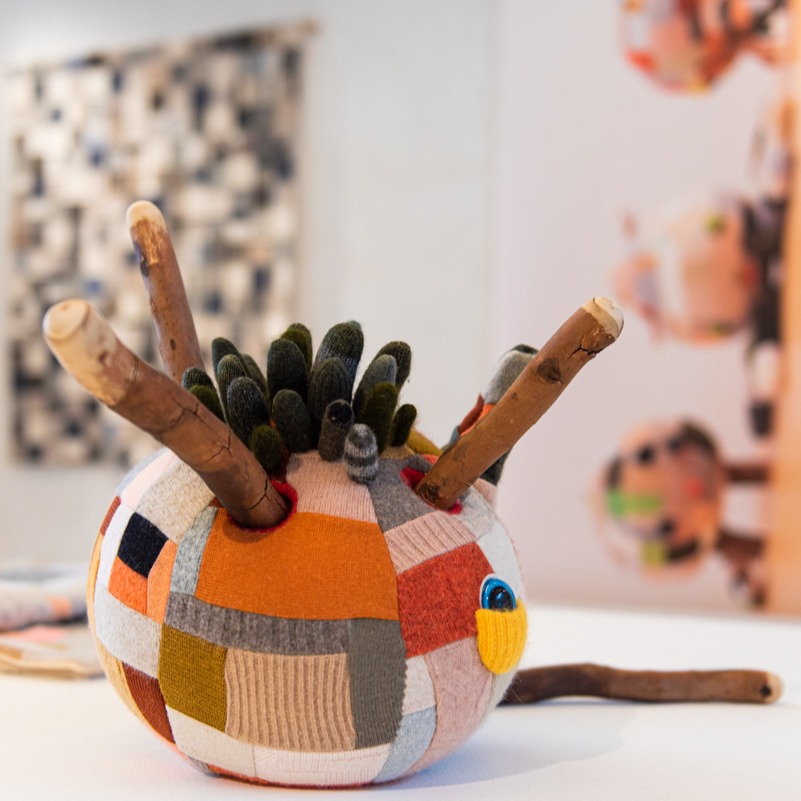
Image credit: Emily Dimozantos

Monster Playground #1, 2020. Image credit: Thuy Vy
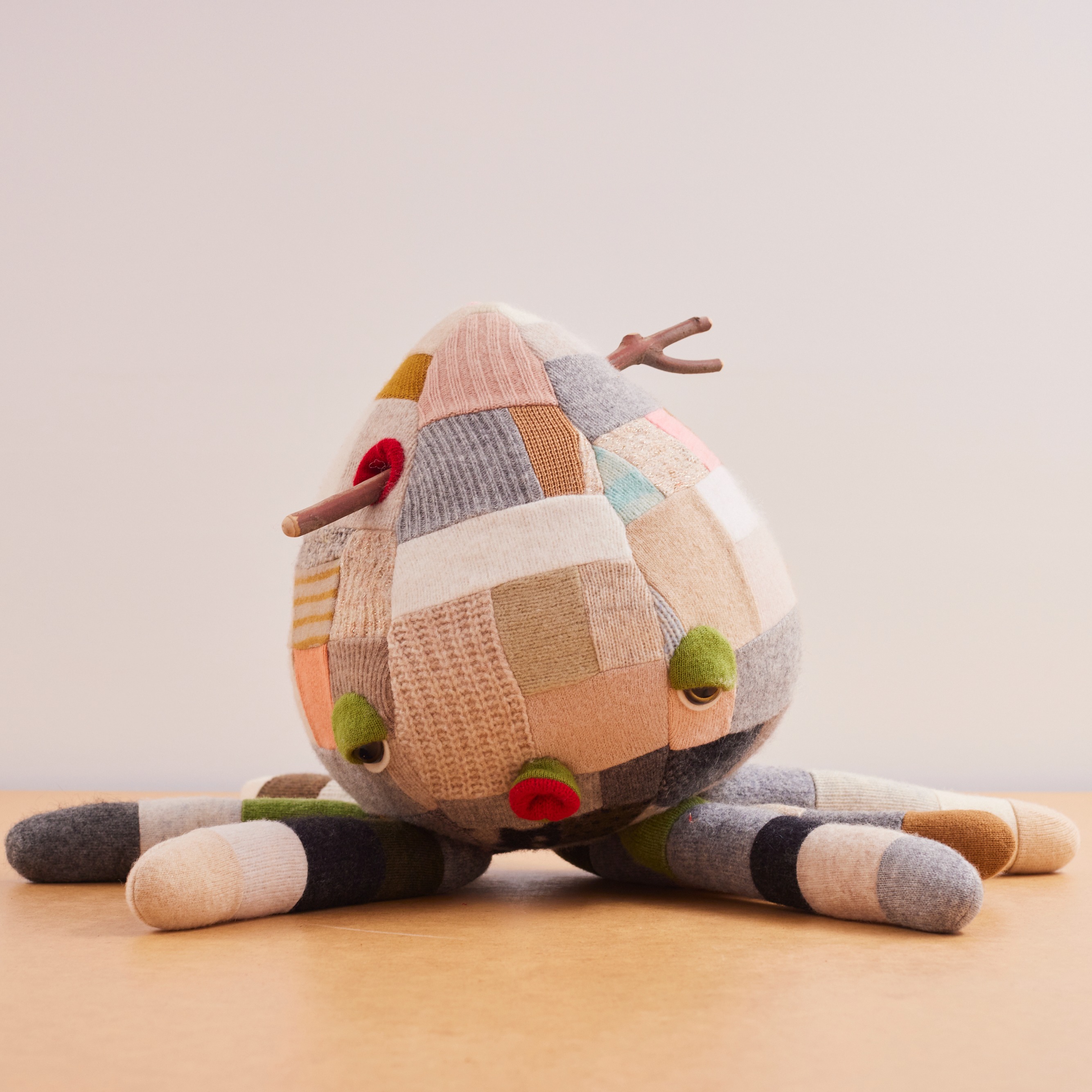
Monster Playground #3, 2020. Image credit: Thuy Vy
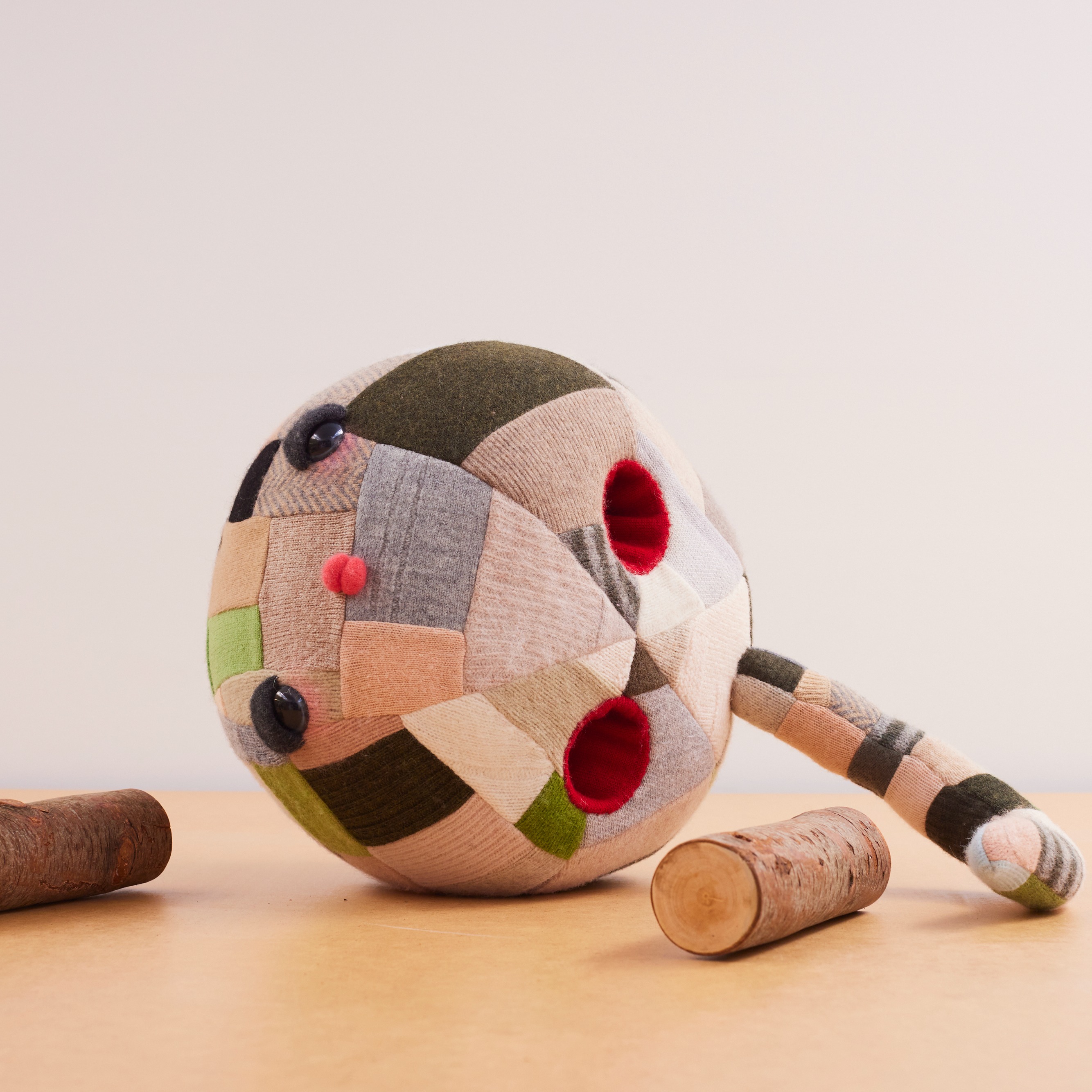
Monster Playground #2, 2020. Image credit: Thuy Vy

Alpaca Quilt, 2020. Image credit: Emily Dimozantos
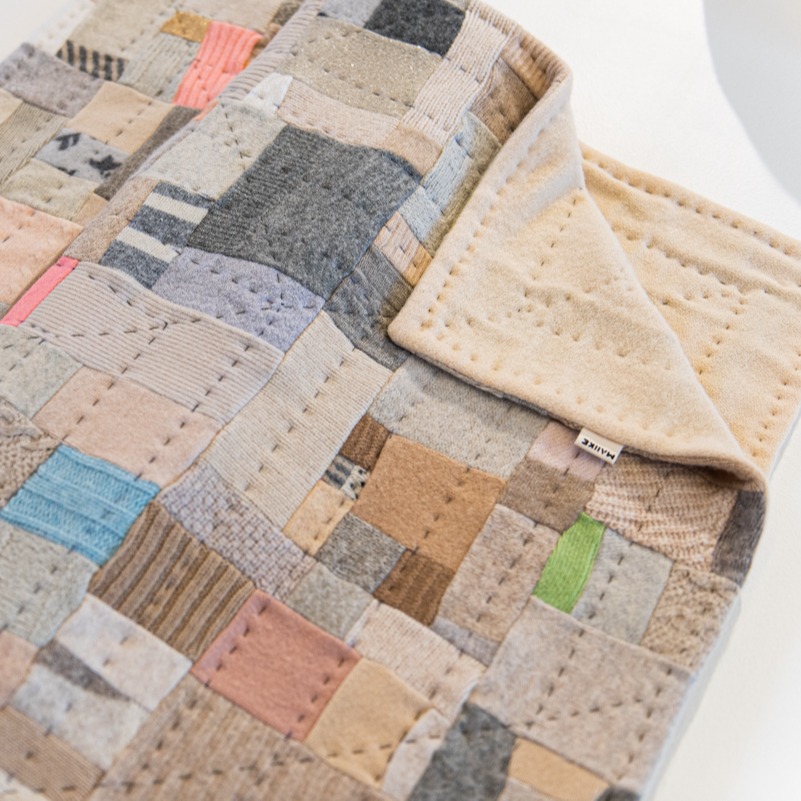
Jumper Scrap Quilt, 2020. Image credit: Emily Dimozantos
Eileen Braybrook
Eileen is a textile designer and craft practitioner working and living in Naarm (Melbourne).
Her playful, conversational style explores colour and texture, mixing nostalgia with otherworldliness. She works across fashion, interiors and experimental knit design.
Eileen's work explores grief and loss, but also joy. She looks out at nature and the diaspora, and the way ancestors and cultural identities shape us.
She completed a BA Textile Design at RMIT majoring in knit in 2013, and has worked as a textile designer for Romance Was Born, Adairs, Wolfgang Scout, Erik Yvon and Country Road. She has taught fashion knitwear at RMIT for the Associate Degree in Fashion Design and has collaborated with artists and makers on a range of exhibitions.
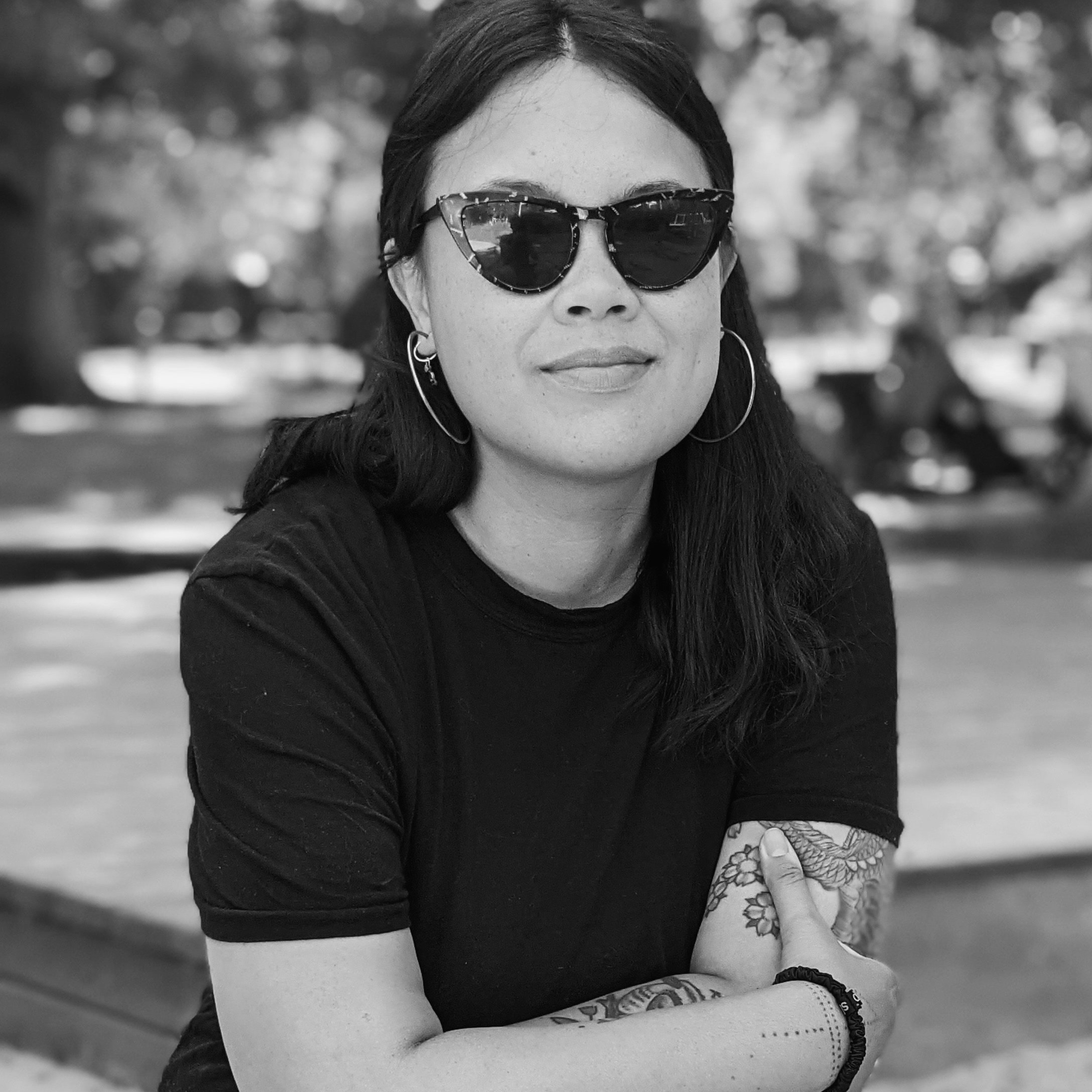
Image credit: courtesy of the designer
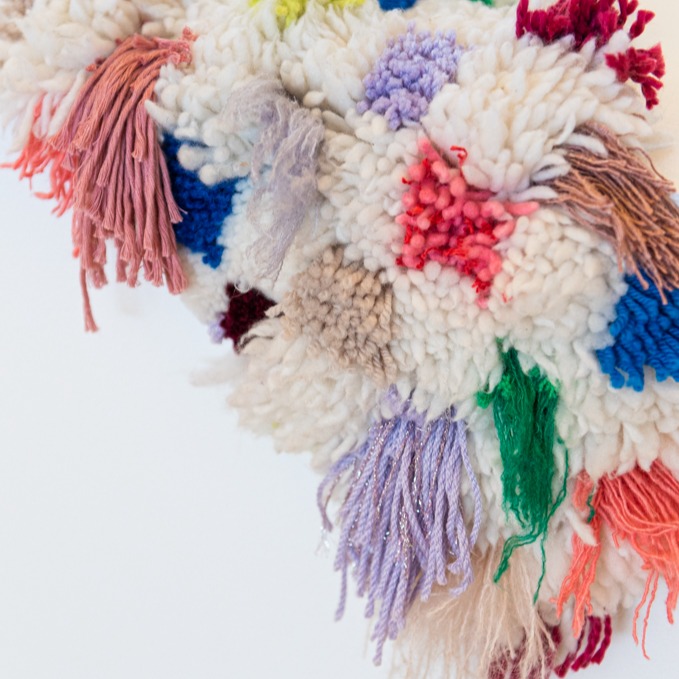
Image credit: Emily Dimozantos

Intramural, 2020. Image credit: Emily Dimozantos

Catch and Release, 2020. Image Credit: Emily Dimozantos

Intramural, 2020. Image credit: Emily Dimozantos
John Brooks
John Brooks is a Melbourne-based artist working across a range of media. His practice reflects on ideas of interconnectivity and the influence objects and materials have on humans, as well as the anthropomorphic qualities humans project onto objects.
Originally trained as a textile designer, John works predominantly with hand-weaving techniques combined with other mediums such as video, sculpture and installation. He balances his practice with teaching at RMIT in the Advanced Diploma of Textile Design and Development and running workshops teaching people to weave with unconventional materials and found objects on makeshift looms.
“For me, design is a process of playing with materials and learning their properties to inform a variety of outcomes, rather than manipulating materials to fit a preconceived idea.”

Image credit: Monica Ramirez
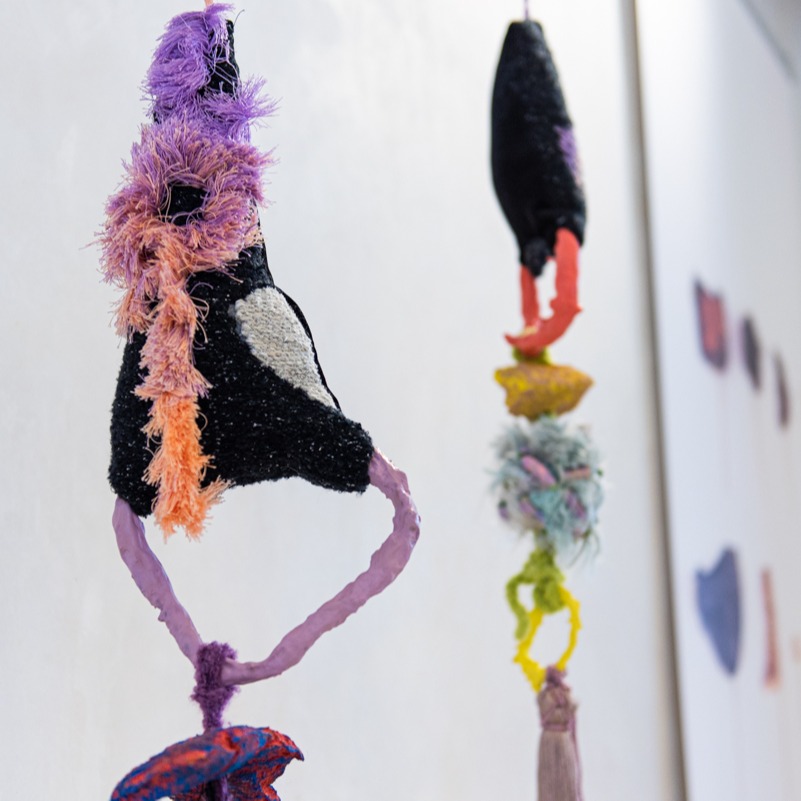
Image credit: Emily Dimozantos
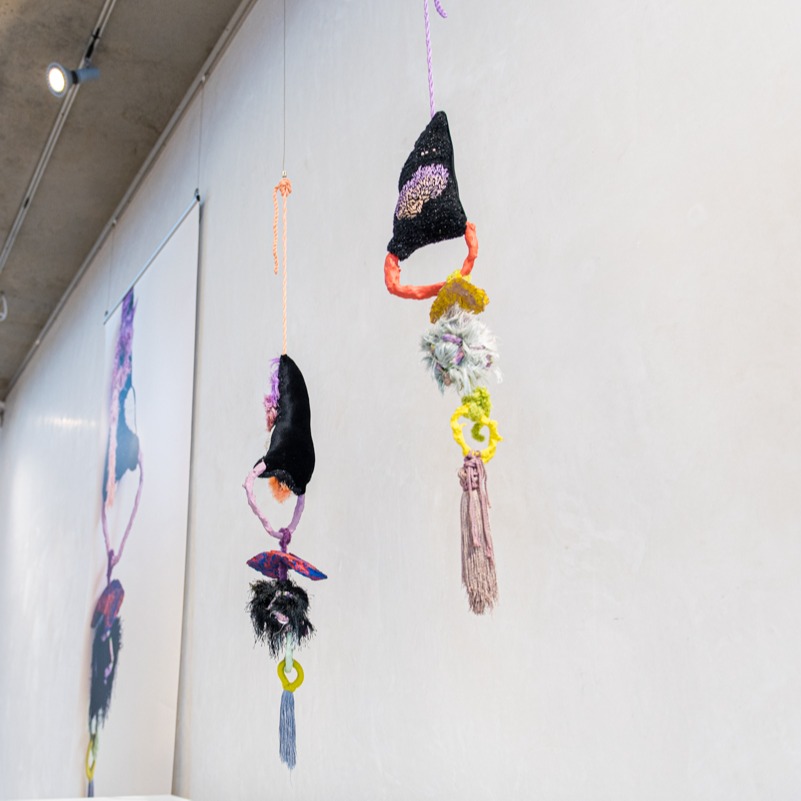
Always arriving, never here (tassels), 2020. Image credit: Emily Dimozantos
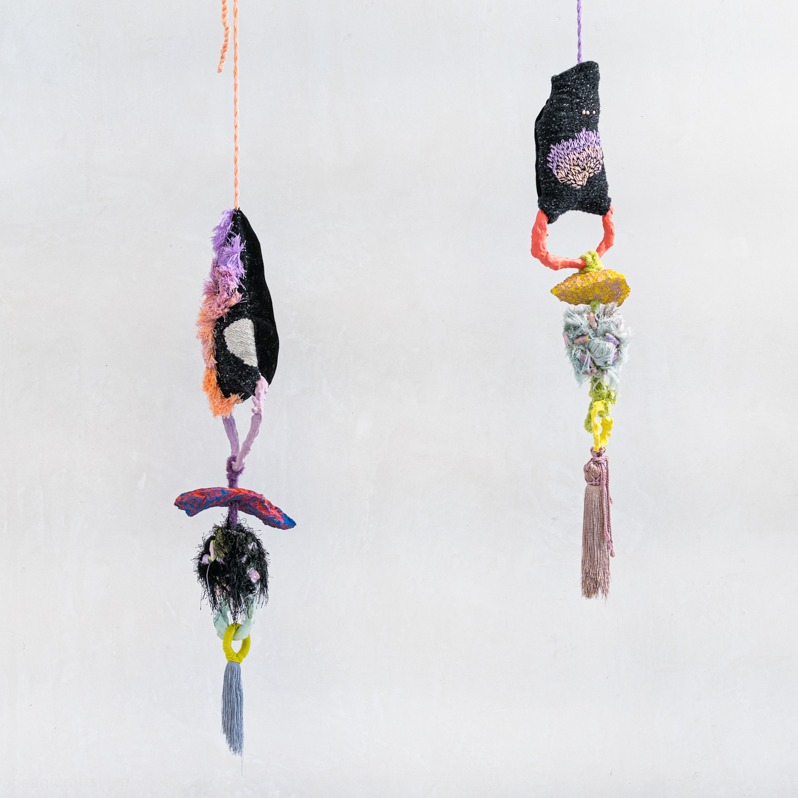
Always arriving, never here (tassels), 2020. Image credit: Emily Dimozantos
Elise Cakebread (Cakebread)
Elise Cakebread is a textile-based artist and designer. She founded her textile design studio Cakebread in 2013.
Driven by experimentation within traditional textile processes and techniques, her work focuses on the tensions created by the unusual or unexpected contrasts that emerge between materials, forms, colours, textures and scale. Through these methods she explores ideas of materiality, tactility, craft, disposability and the ornamental.
Her cross-disciplinary approach gives life to sculptural work, decorative objects, accessories and soft furnishings.
Elise Cakebread Second String was supported by a grant from Creative Victoria/Regional Arts Victoria.
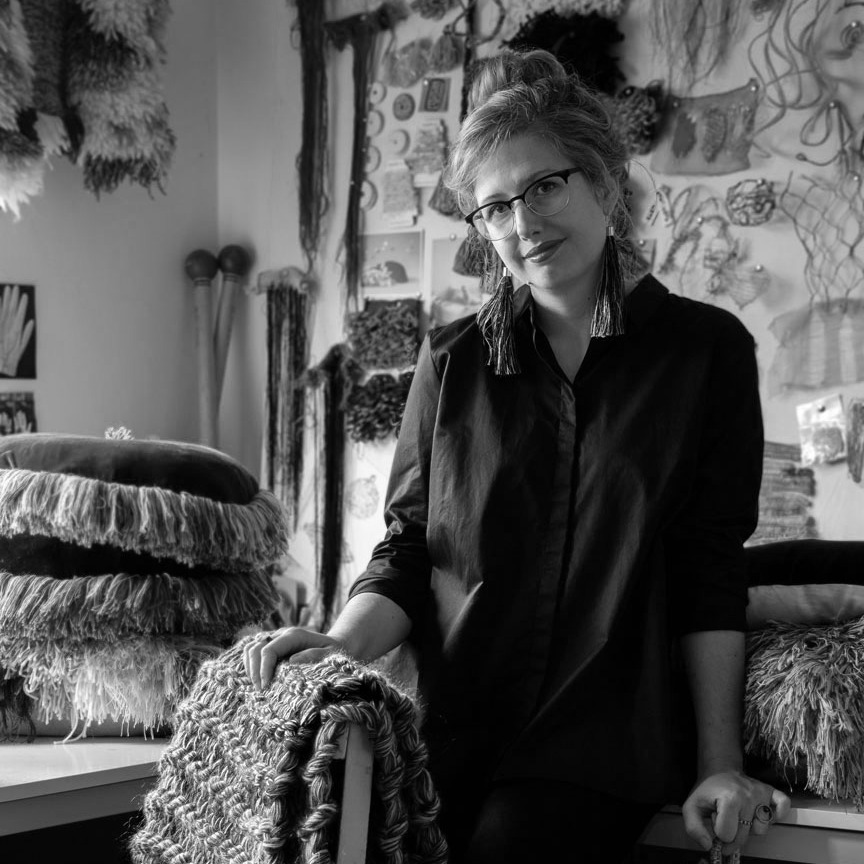
Image credit: Michael Quinlan

Second String - Swatch 24, 2020. Image credit: Emily Dimozantos
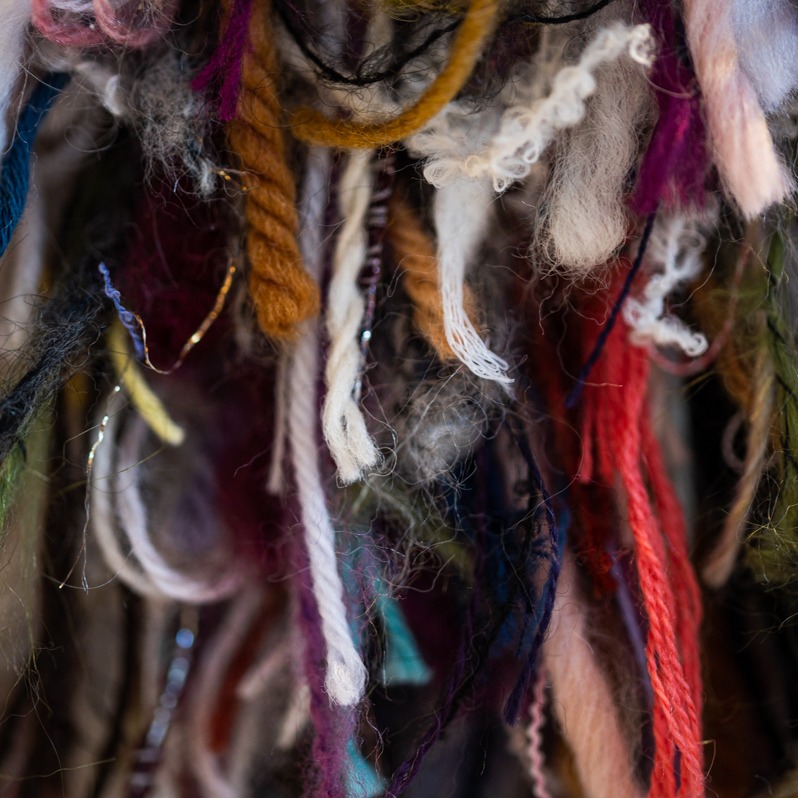
Second String - Swatch 18, 2020. Image credit: Emily Dimozantos
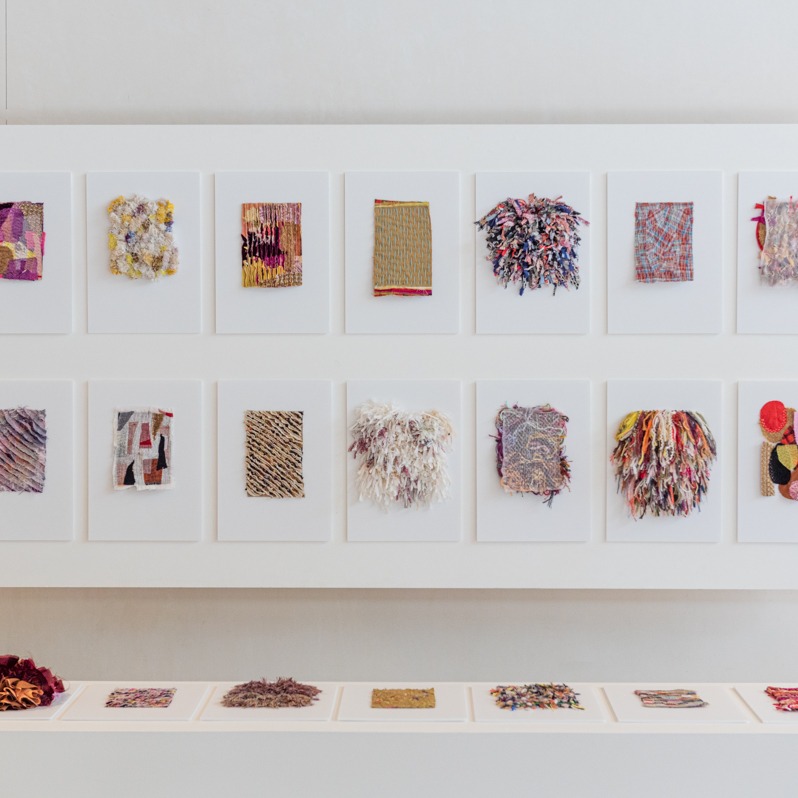
Second String - Swatches 1 to 21, 2020. Image credit: Emily Dimozantos
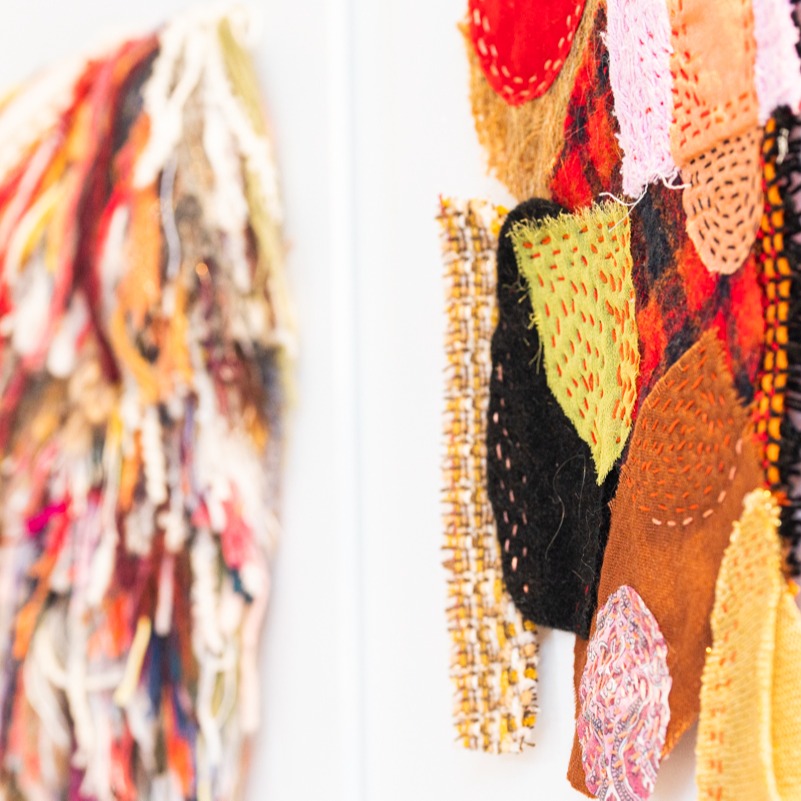
Second String - Swatch 13, 2020. Image credit: Emily Dimozantos
Michelle Boyde
Michelle is a designer and curator based in Marion Bay, Tasmania, Australia.
With a Bachelor of Design (Honours) from RMIT School of Architecture and a background in health and contemporary dance, Michelle approaches design in a broad-thinking and cross-disciplinary way, with a unique and transferable skill set that spans fashion, costume, interiors and installation.
She has designed and curated extensively within the performing and visual arts industries for organisation such as Chunky Move Dance Co. Mona, NGV Artbeat, Stompin’ and Terrapin Puppet Theatre as well as for Festivals Dark Mofo, State of Design and Melbourne Fashion Week.
Michelle has a particular interest in flexible fabric (stretch and knitwear) and its relationship to the human body and health (both physical and psychological), and is currently investigating CAD knitting design capabilities with the installation Hypnapod – an ongoing project exploring the phenomenon of ‘entrainment’, with art collective Unconscious Collective and collaborator Professor Jenny Underwood (RMIT). Hypnapod has been presented in various iterations (both permanent and temporary) since 2015 for organisations Menzies Institute of Medical Research, Monash University, MPavilion and Mona Foma.
Michelle is the current Tasmanian editor of Garland Magazine, a magazine dedicated to promoting connections across the Asia Pacific region through stories, craft and design. She is also a regular peer for Arts Tasmania
Designer Profile
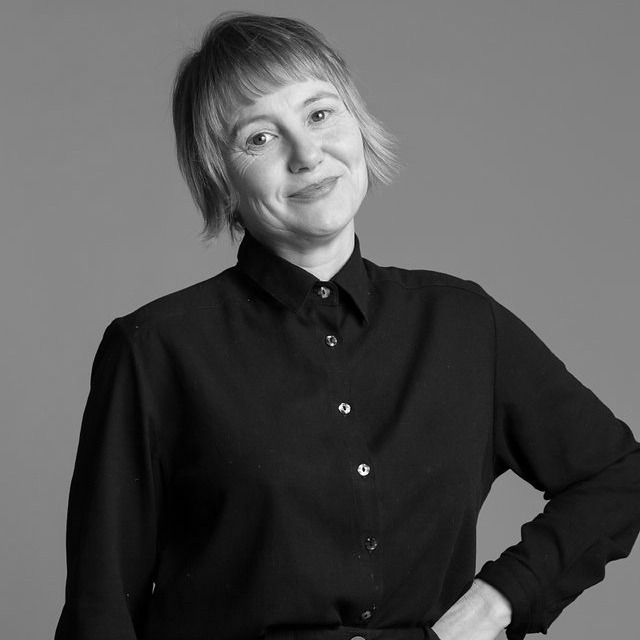
Image credit: Kishka Jensen

Test Pattern 01, 2020. Image credit: Emily Dimozantos
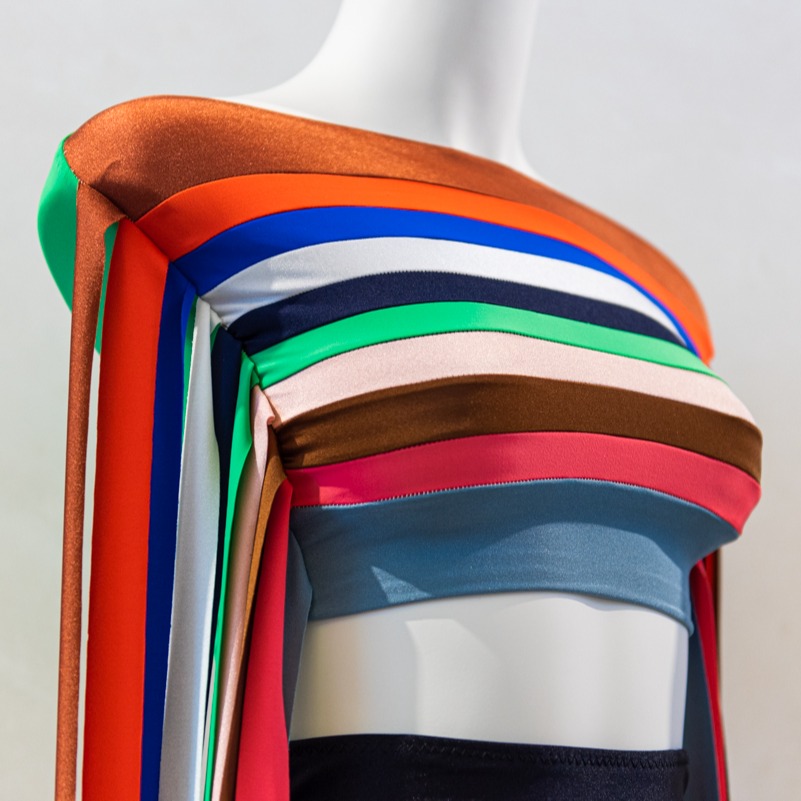
Test Pattern 02, 2020. Image credit: Emily Dimozantos
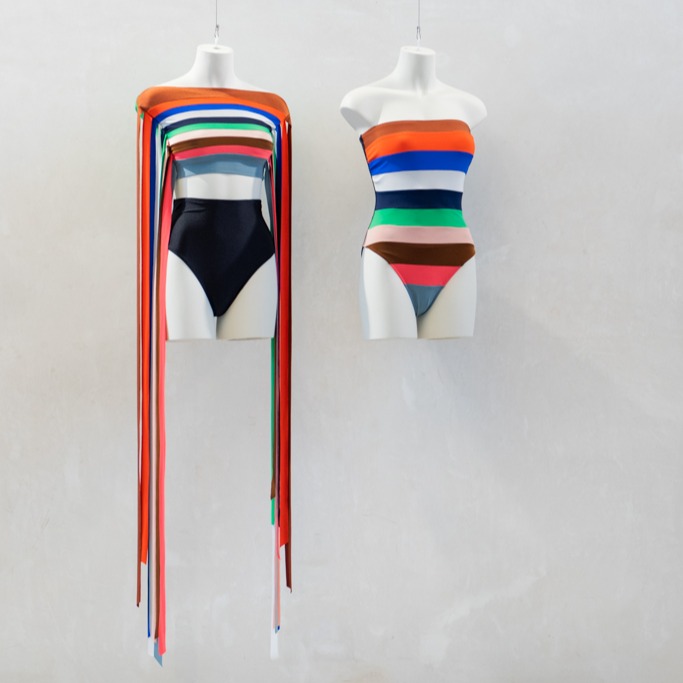
Image credit: Emily Dimozantos
Ed Linacre, Philippa Abbott & Mycelium Studios x Brendon Morse
This design collective have been experimenting with mycelium composites and developing mycelium based biodegradable materials in their laboratory at Mycelium Studios for more than 18 months. The first stage involves hyphae growth from spawn inoculation in agar, forming into Mycelium.
This work is a collaboration that explores a shared belief in the need for biomimicry and ecological design to drive transitioning to a climate adapted future. Within this, the overhaul of industrial systems to be closed loop, whilst engaging in finding creative, possible and rapidly scalable solutions to deal with the mess society has created. These shared beliefs are combined with a deep curiosity, a joy in experimentation and now a shared love for mycelium as a material. The nexus of the group brings together established designers, ecologists, makers, and creative thinkers to explore the material, experiment with it as a scaled manufacturing process and develop new products and design methods.

Image credit: Emily Dimozantos
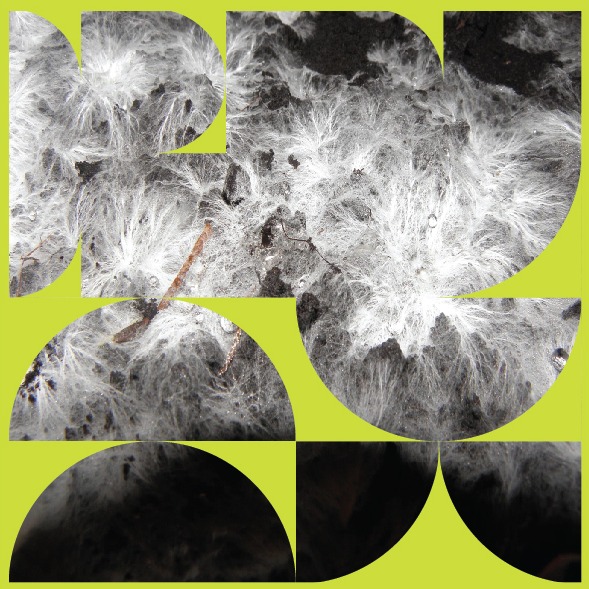
Image credit: courtesy of the designers

Godlight: Part 2 - Death, 2020. Image credit: Emily Dimozantos

Toad Stool, 2019. Image credit: Emily Dimozantos
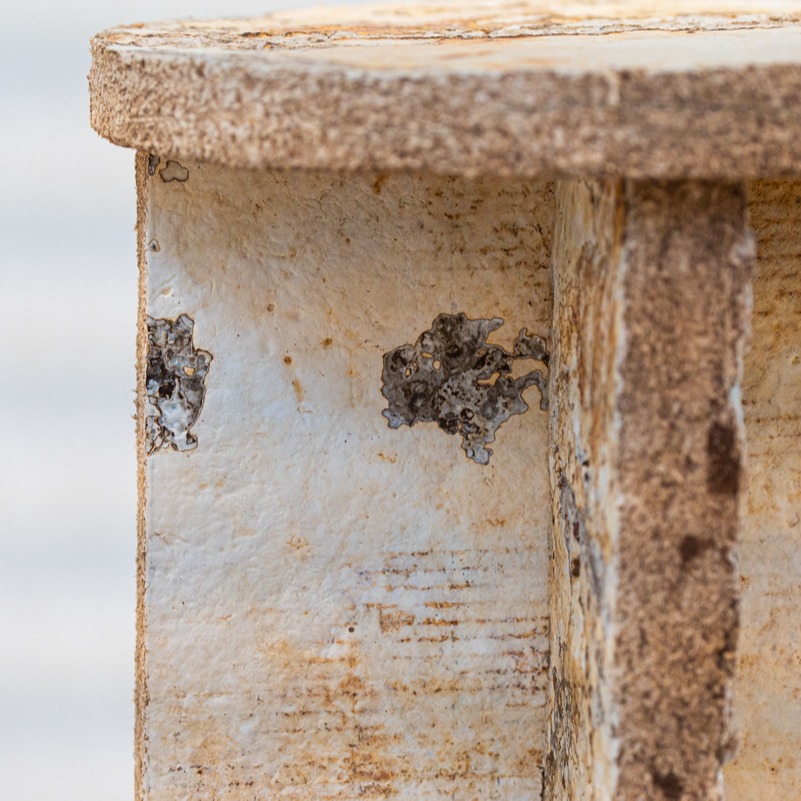
Toad Stool, 2019. Image credit: Emily Dimozantos
